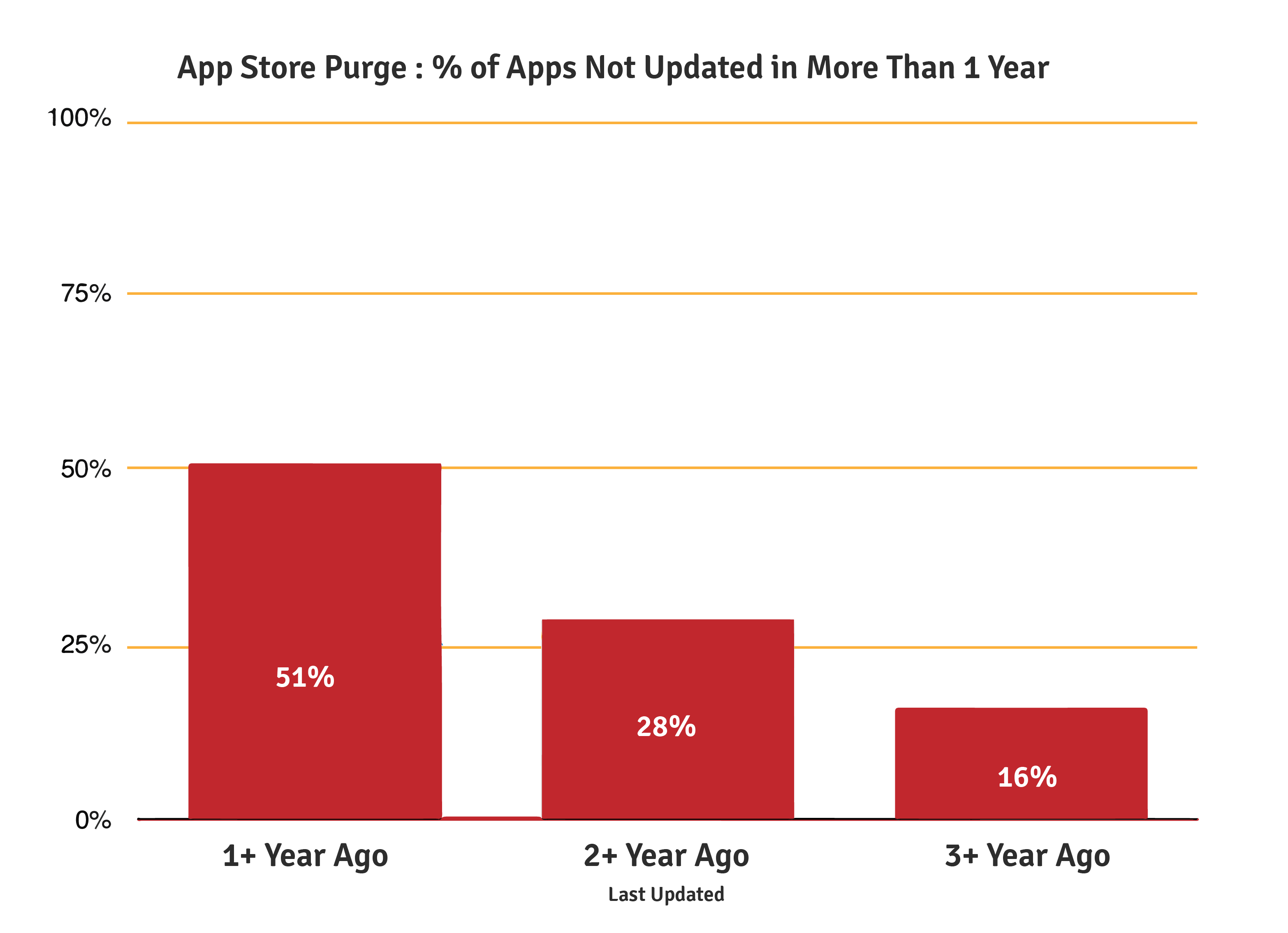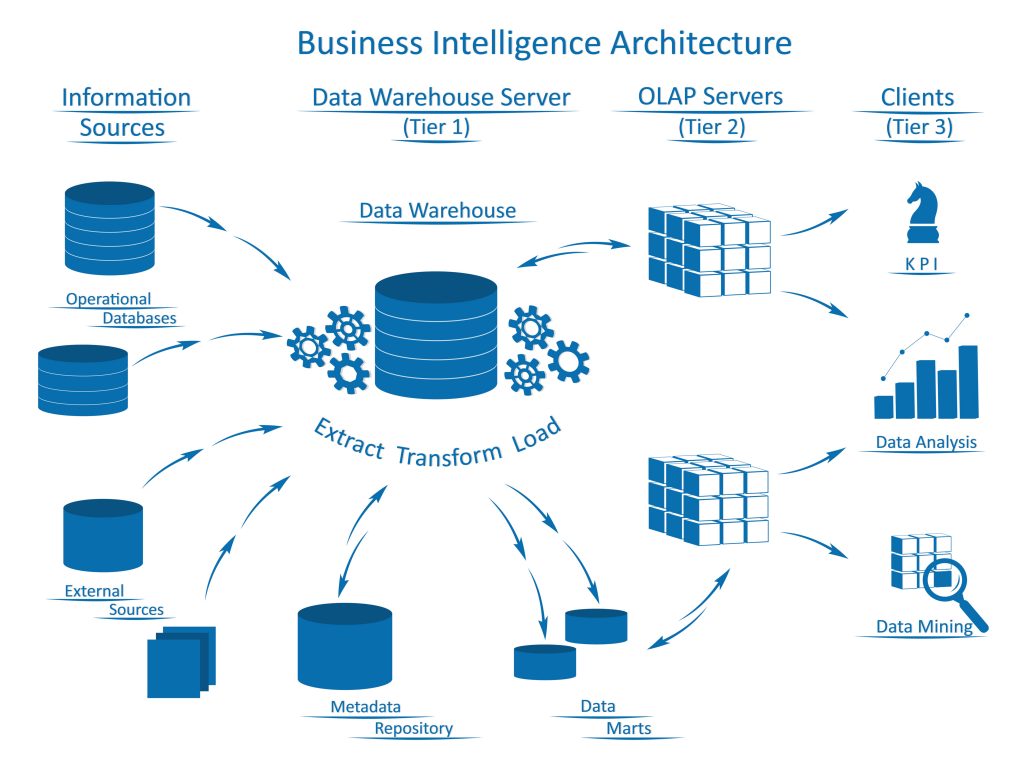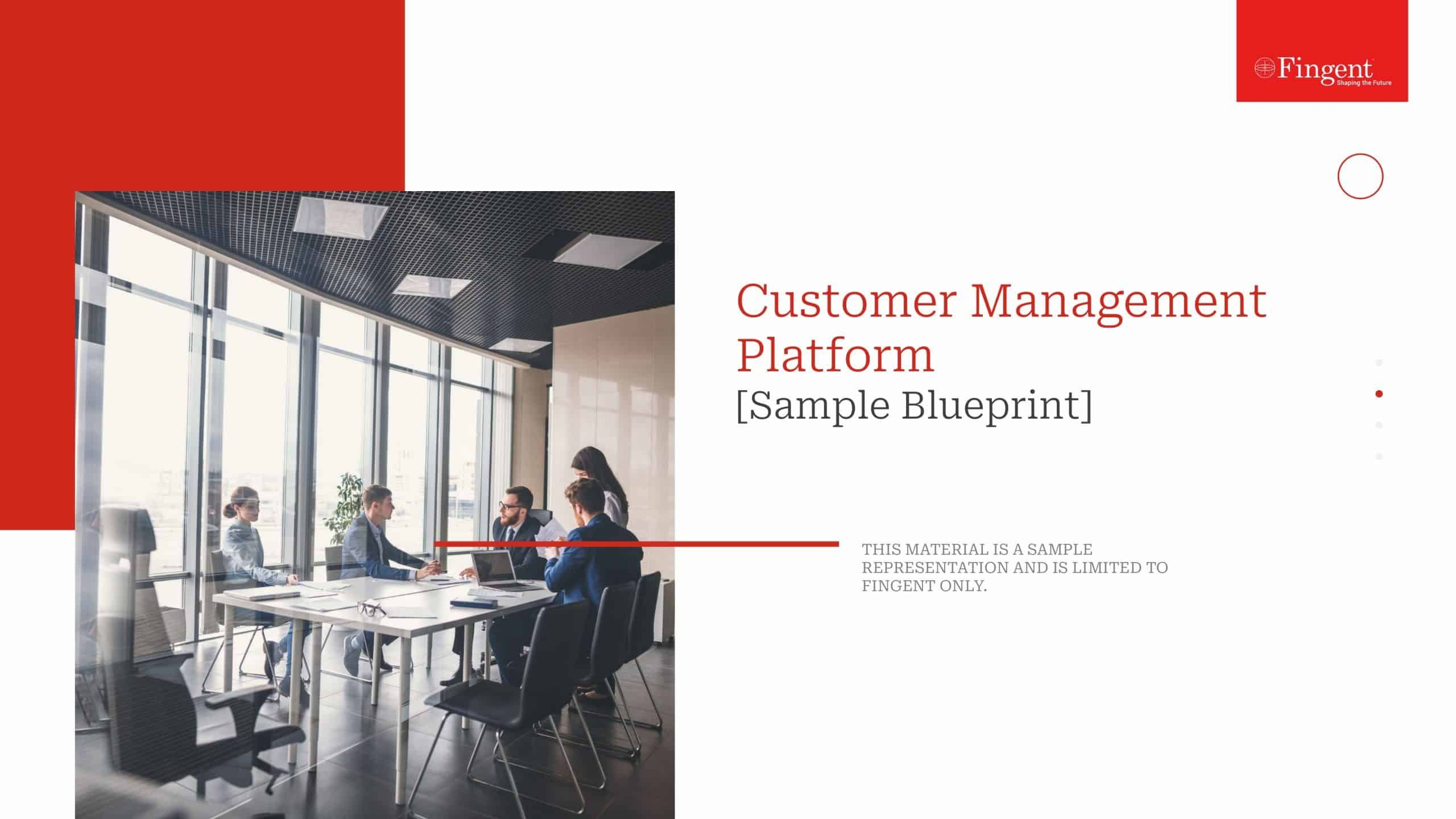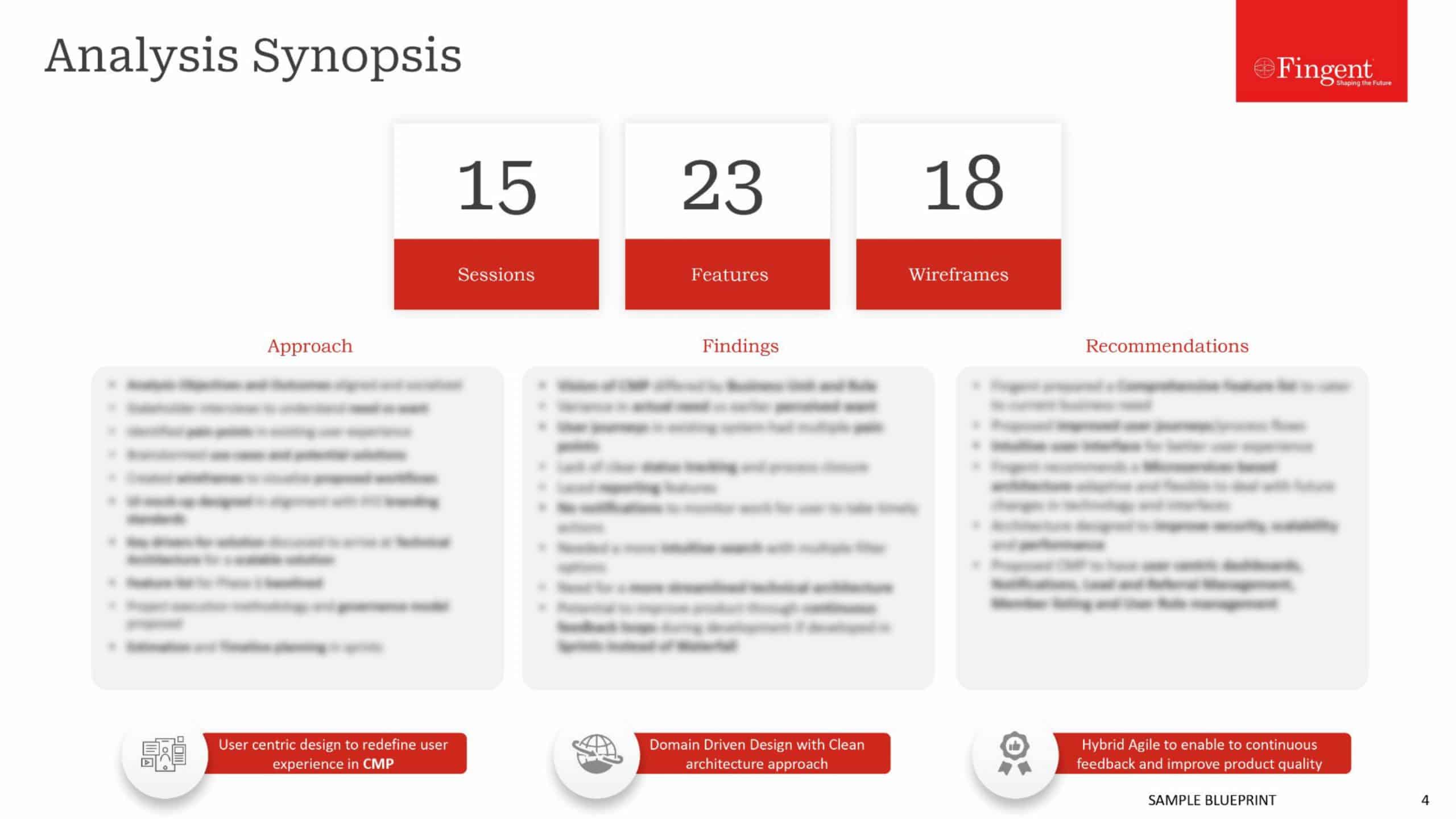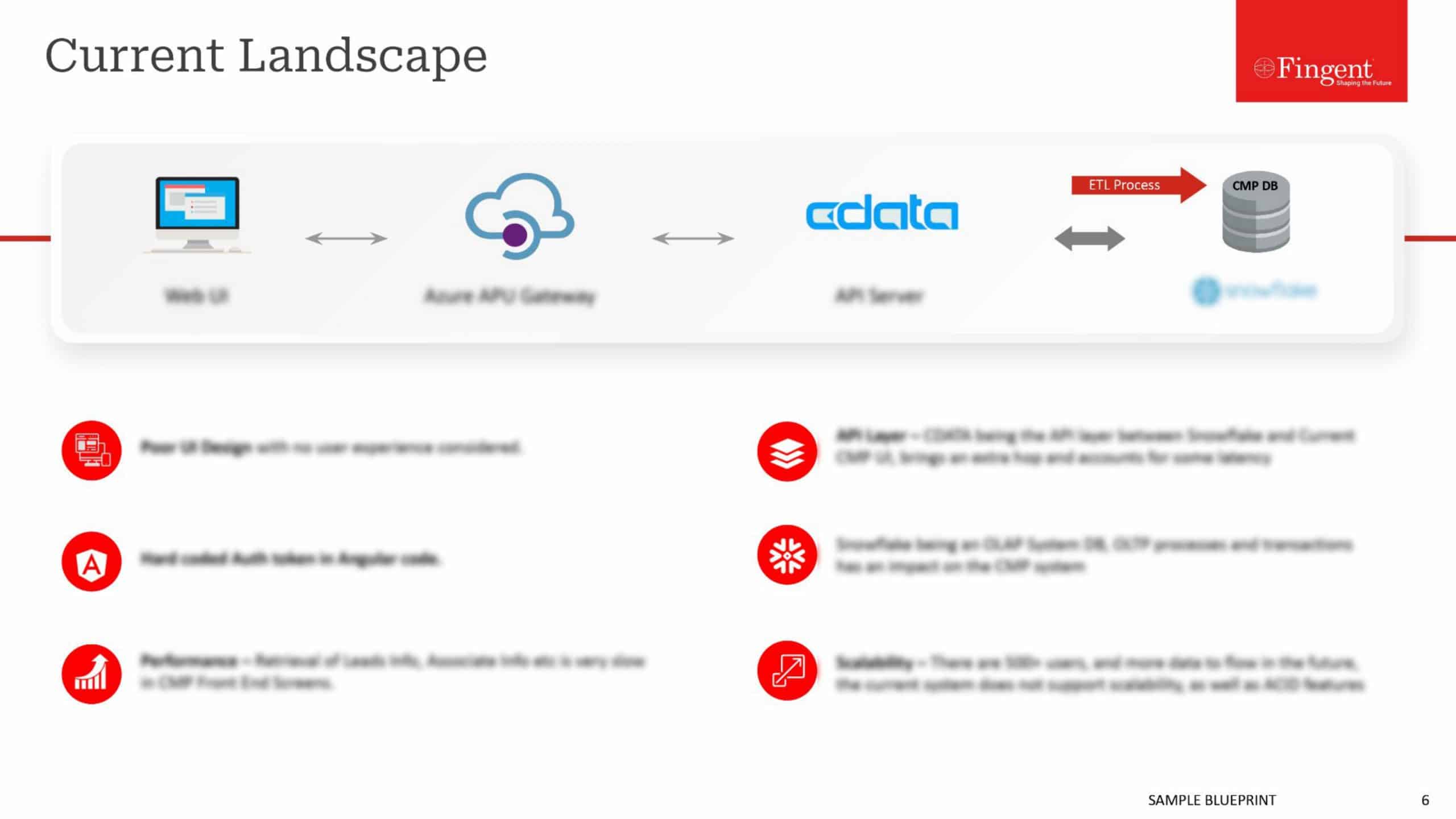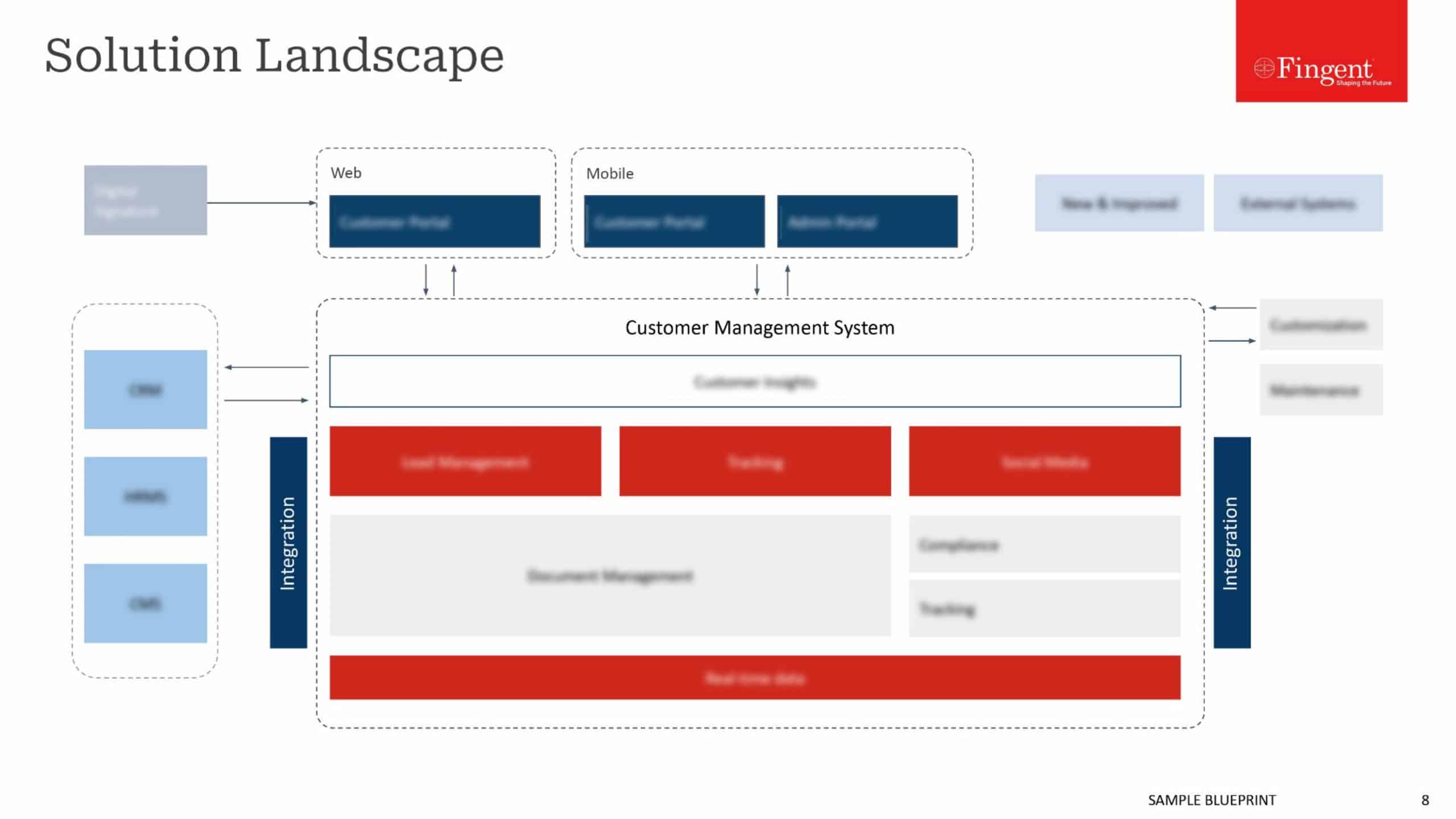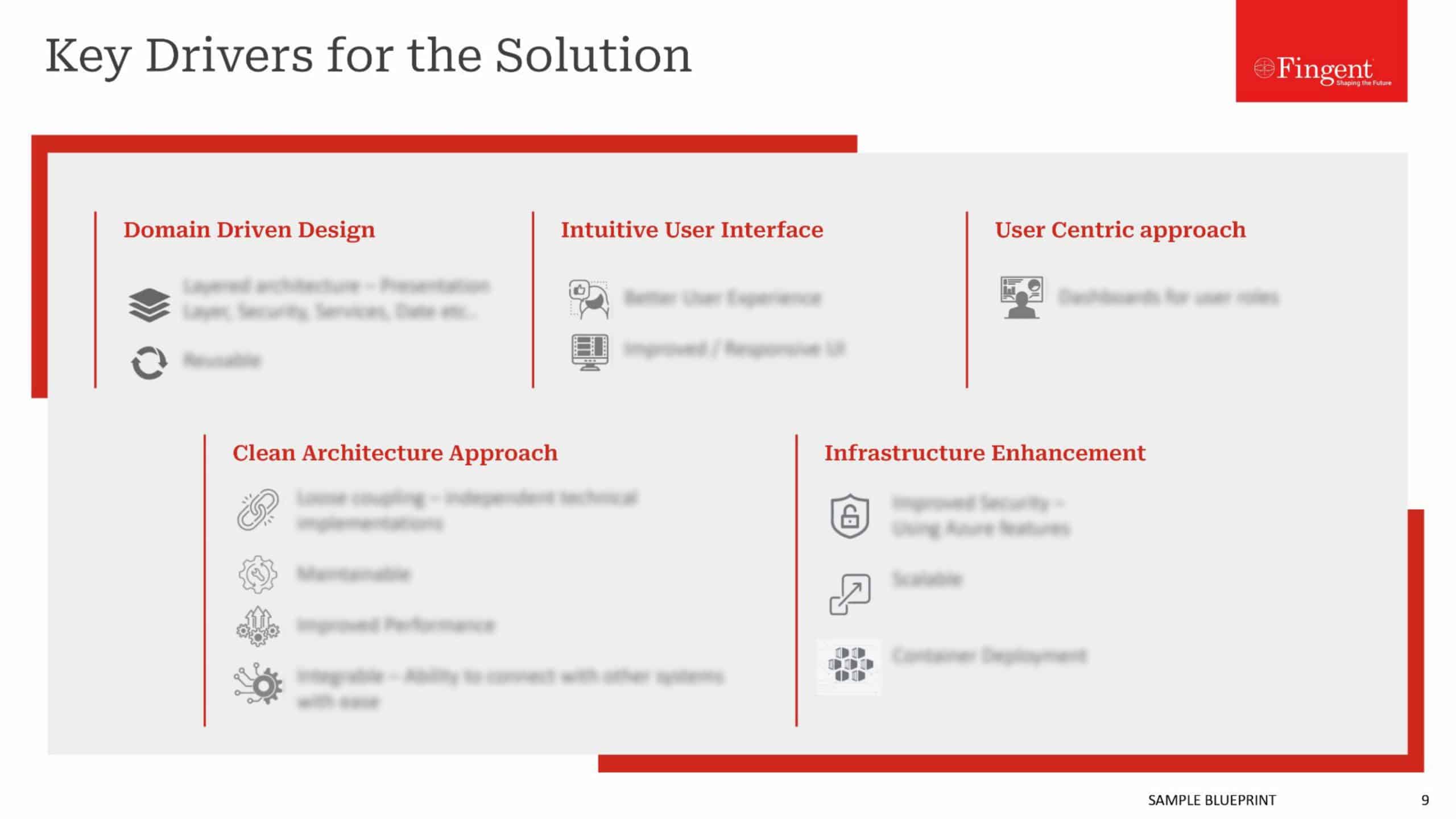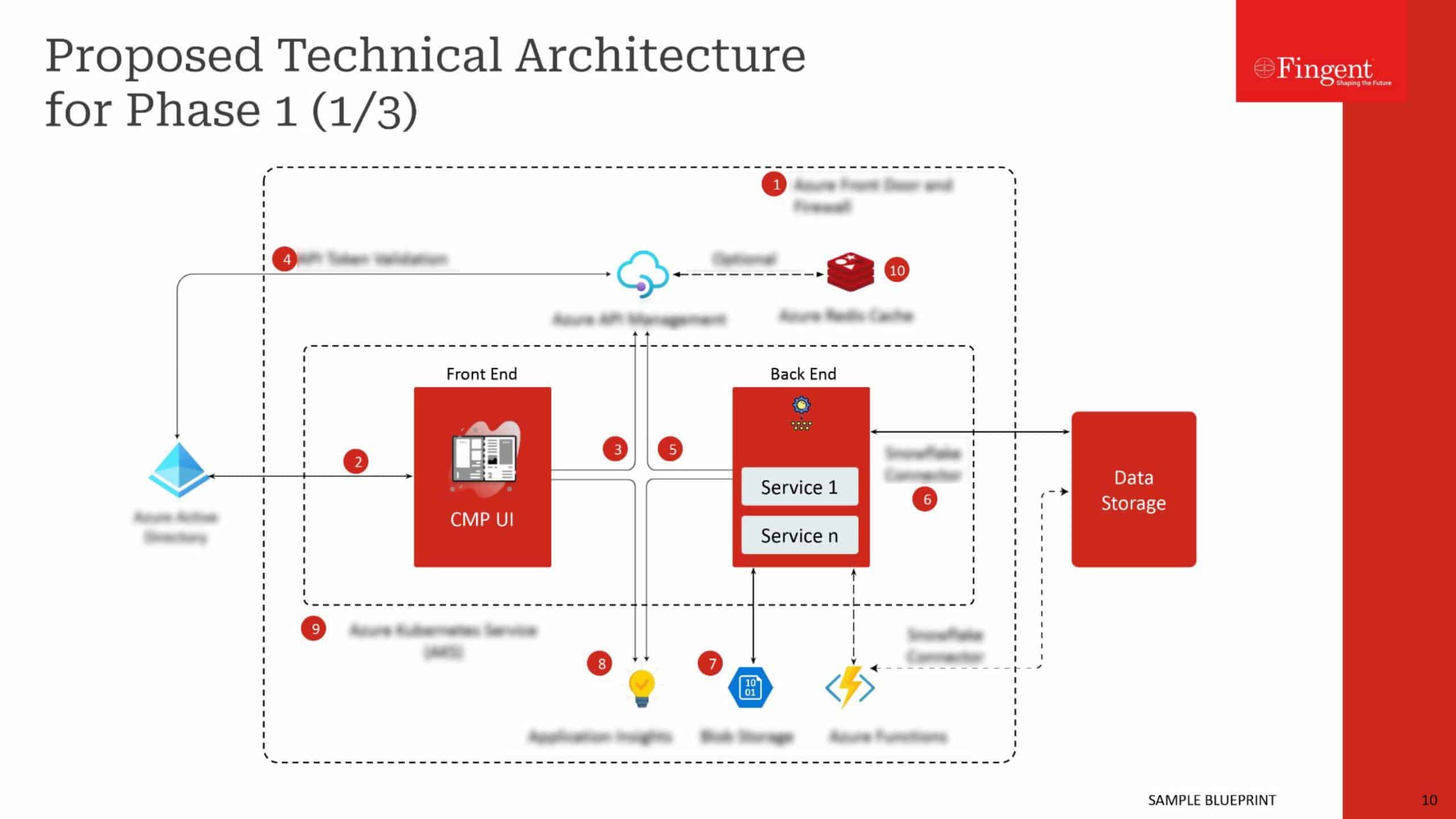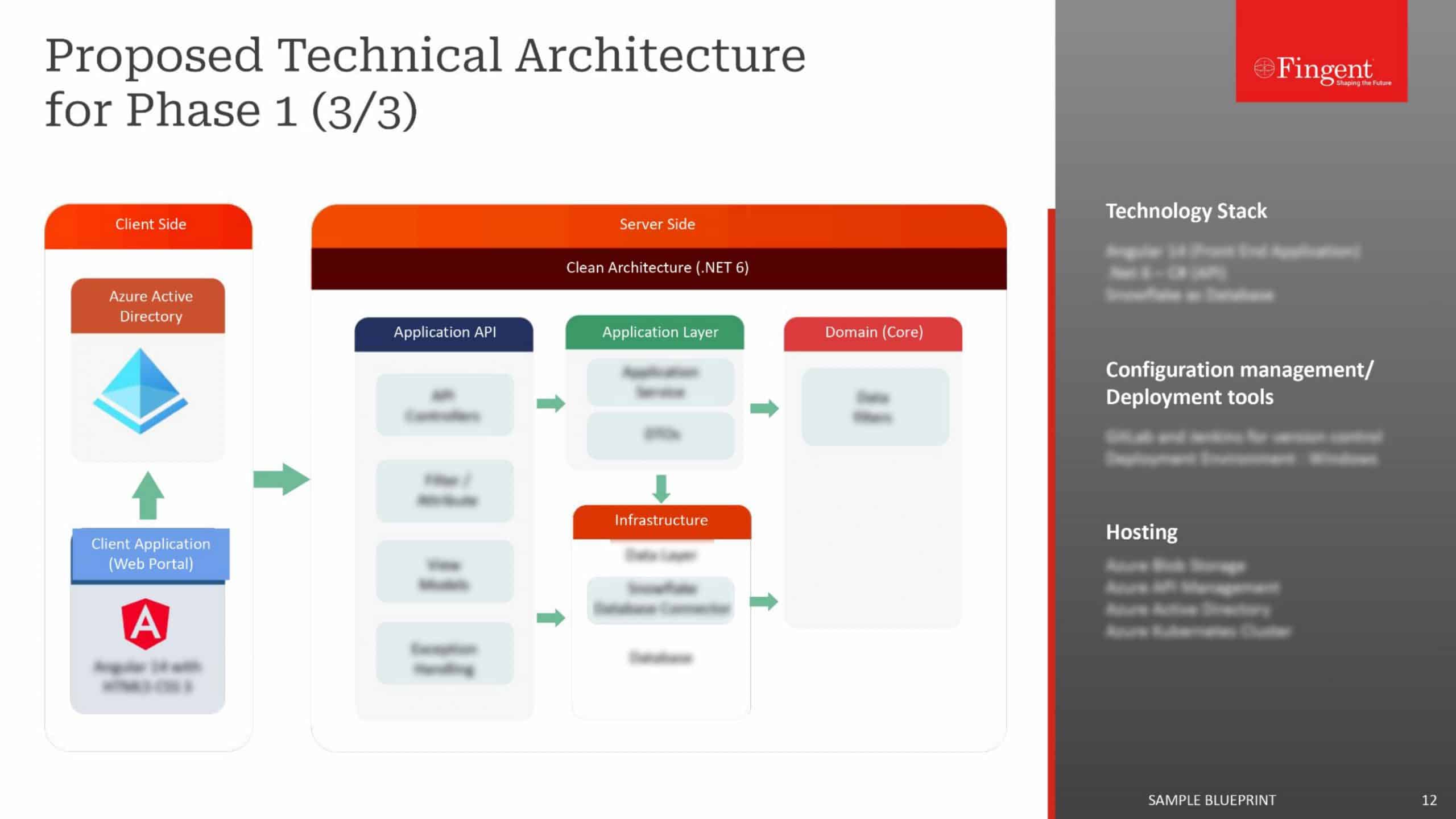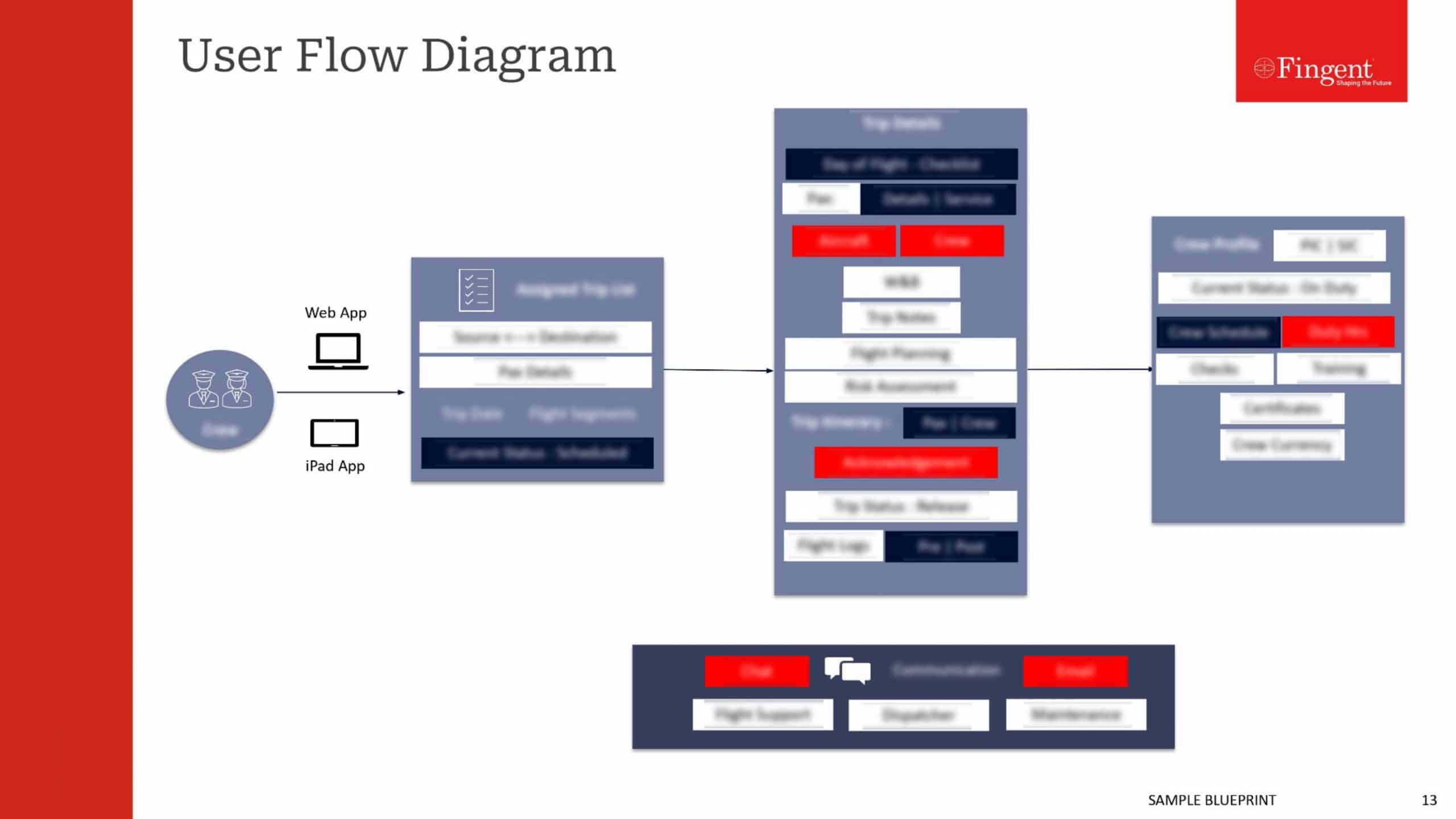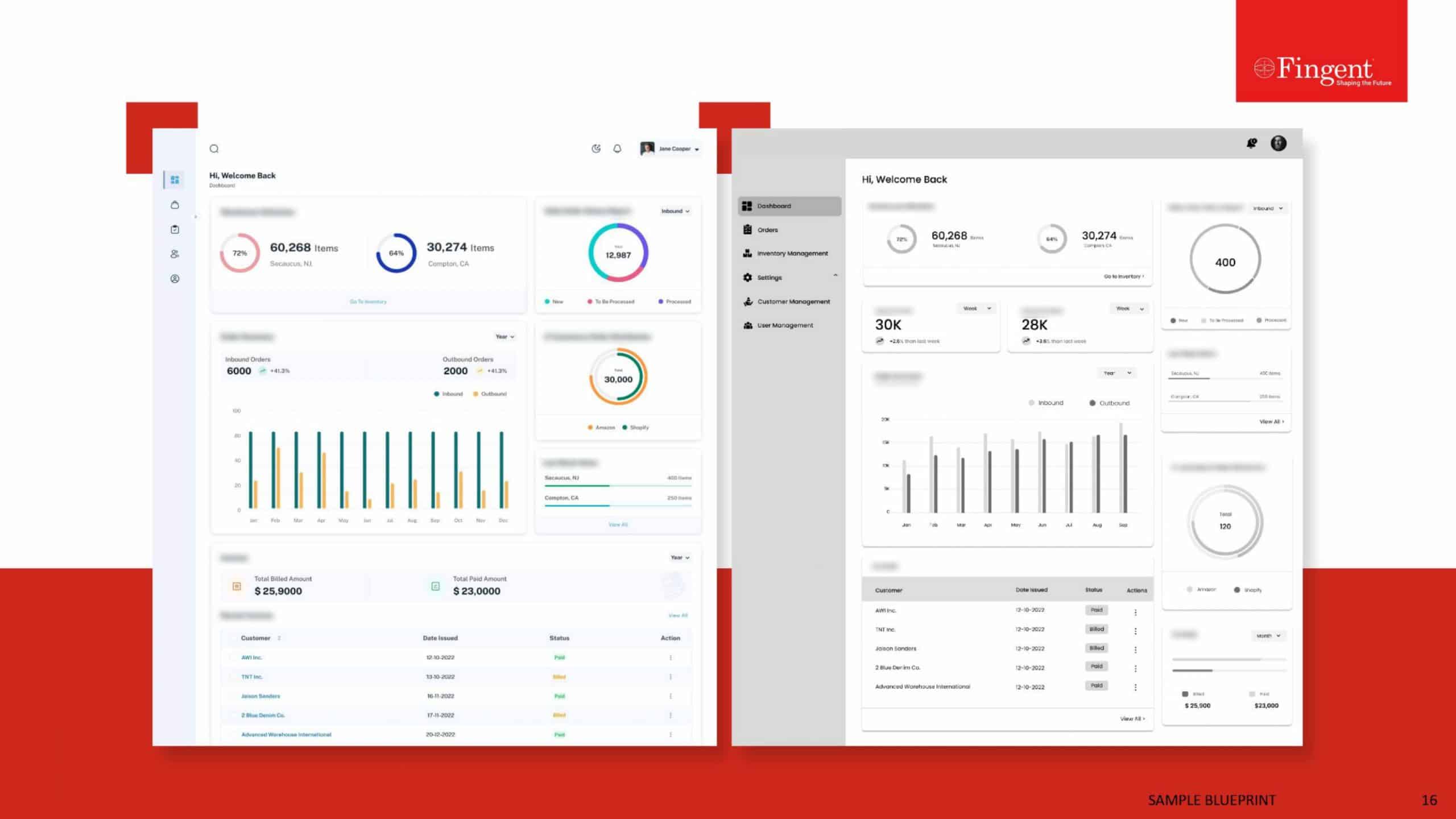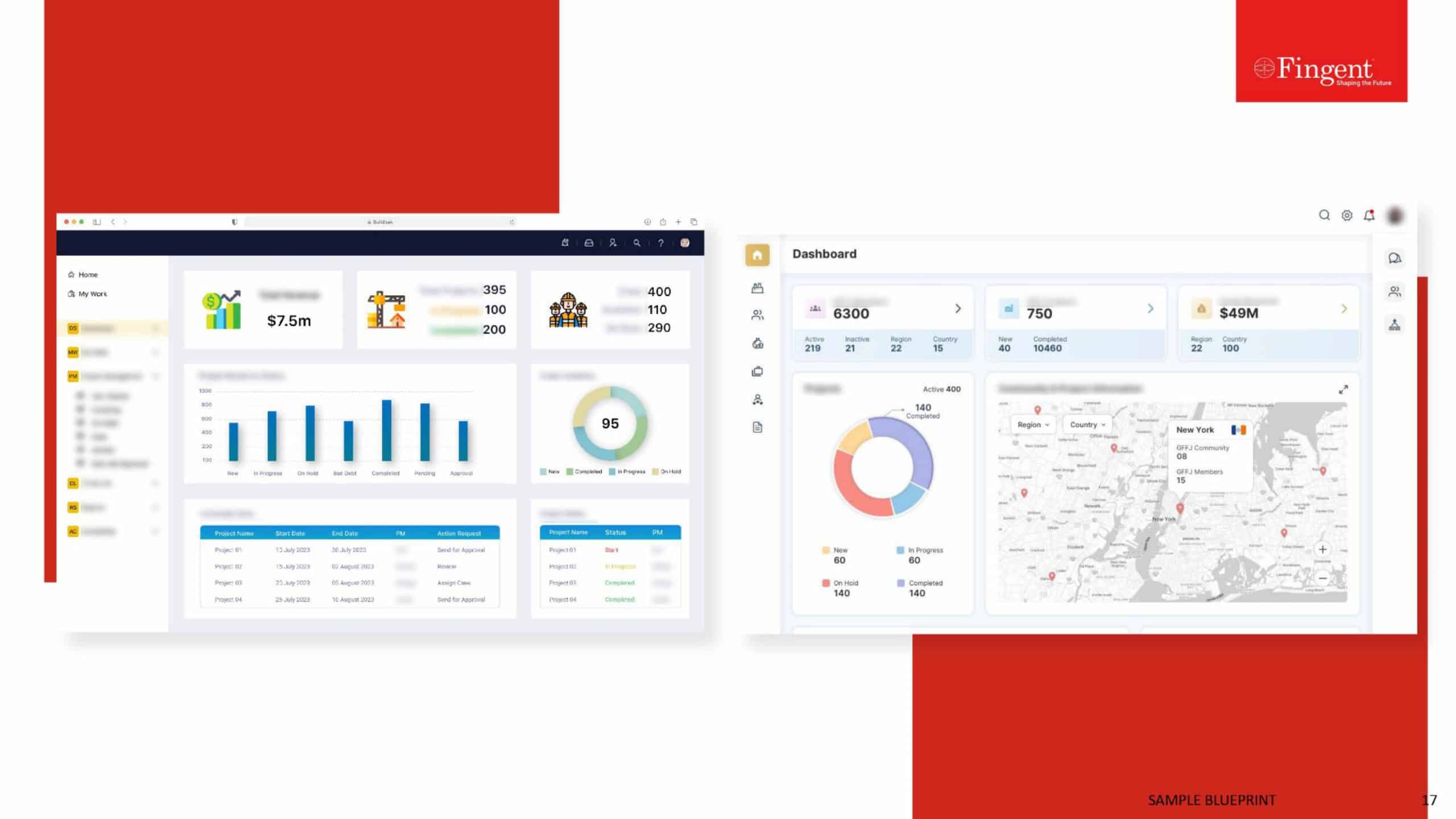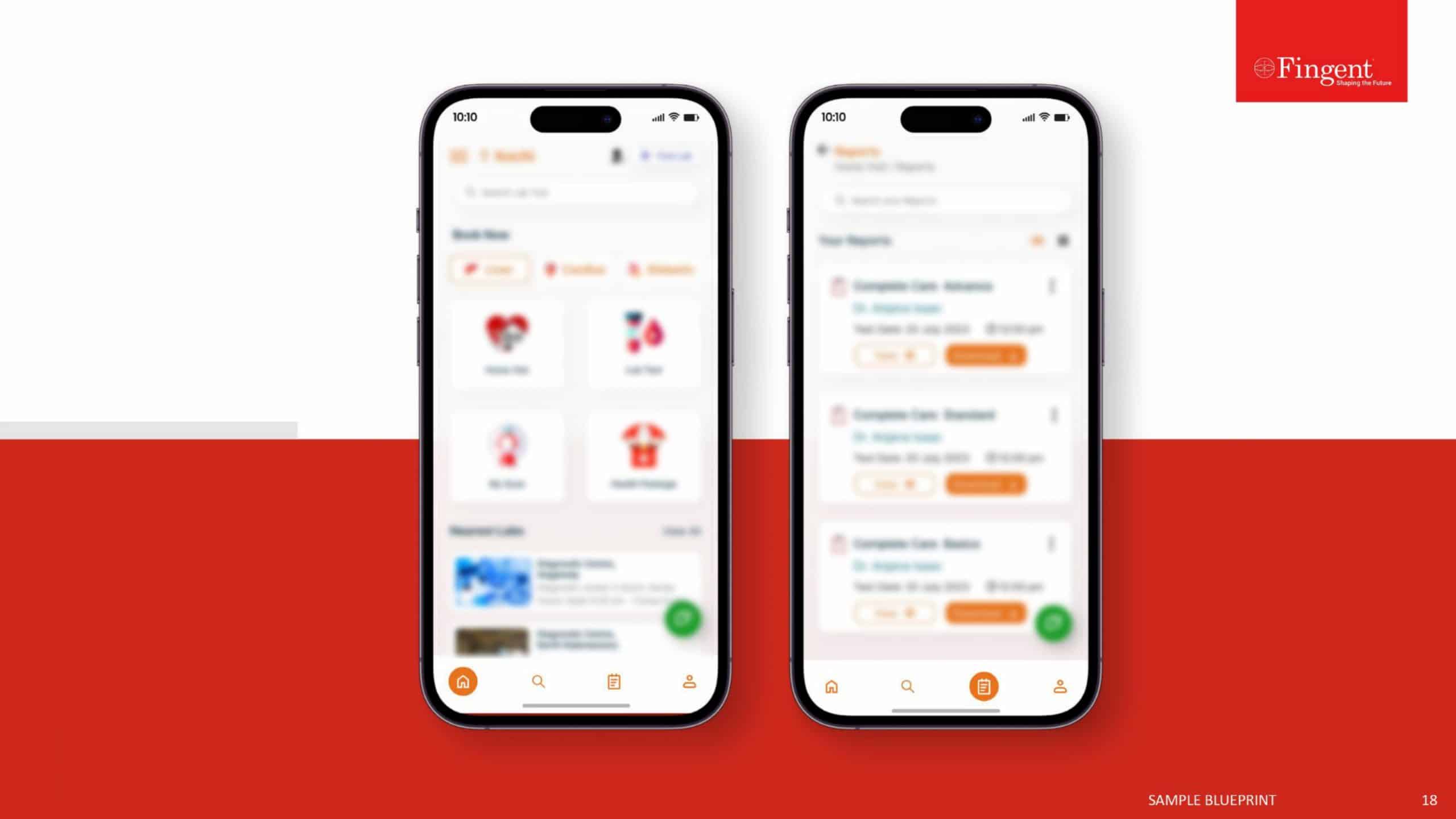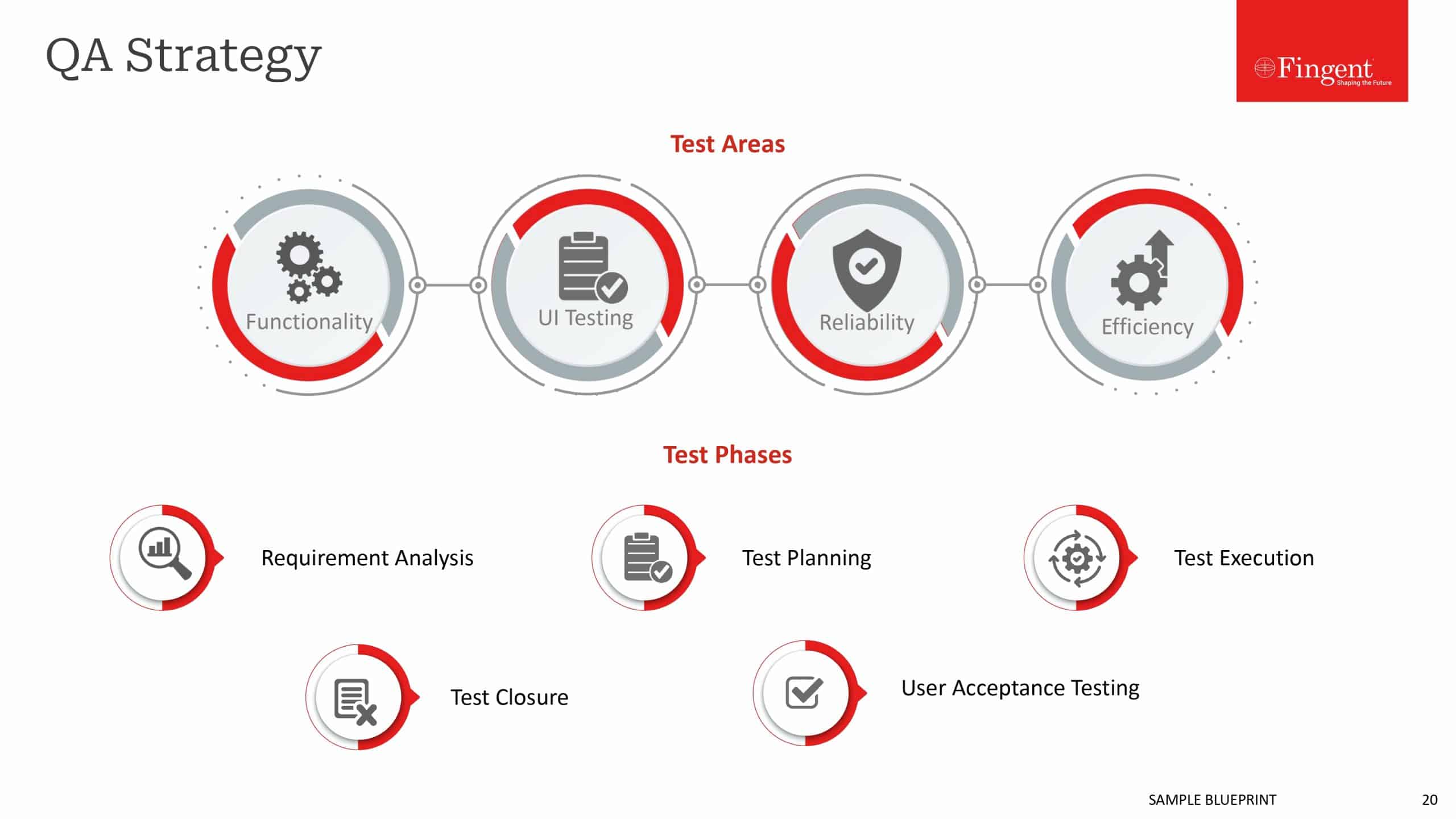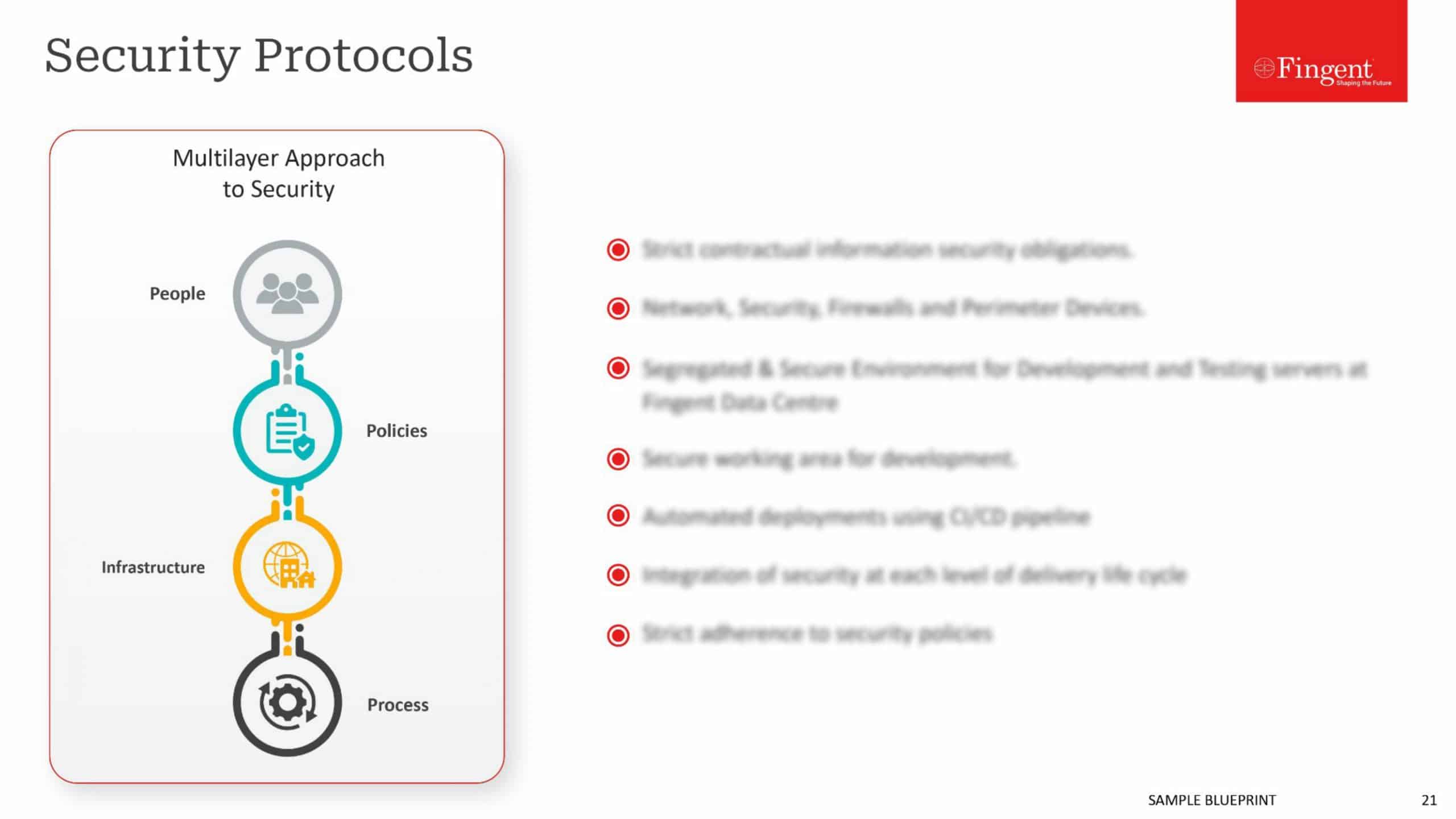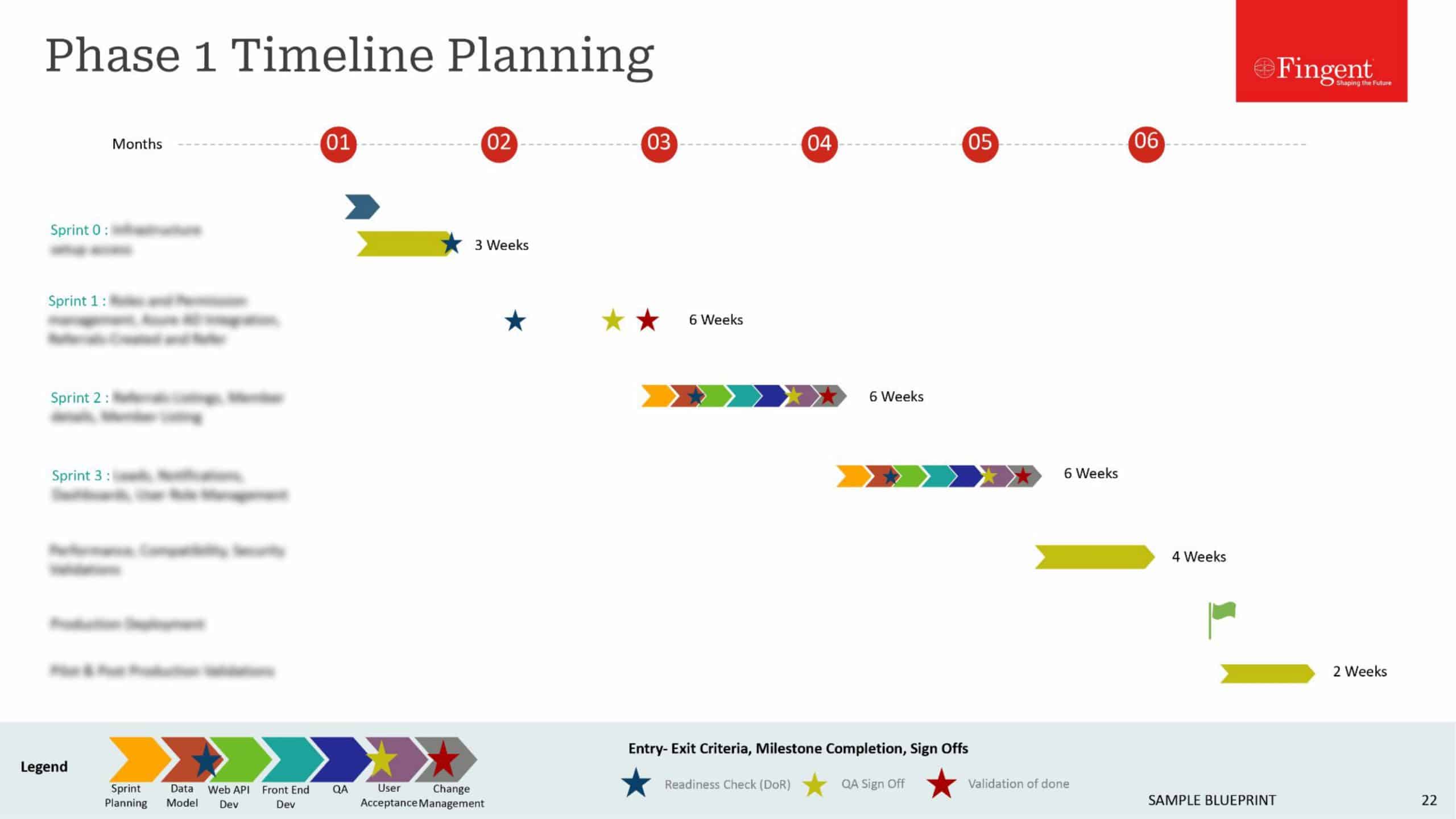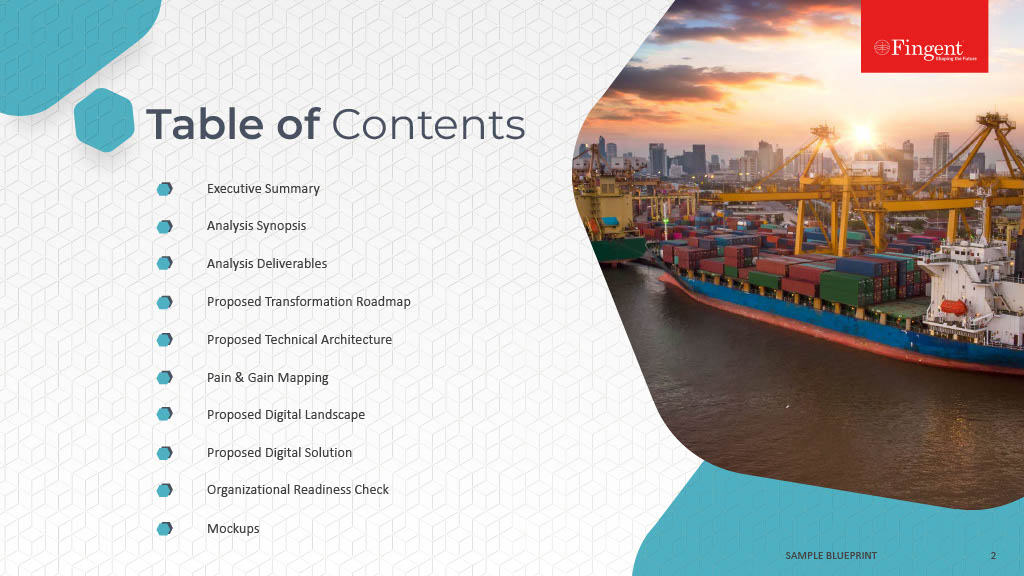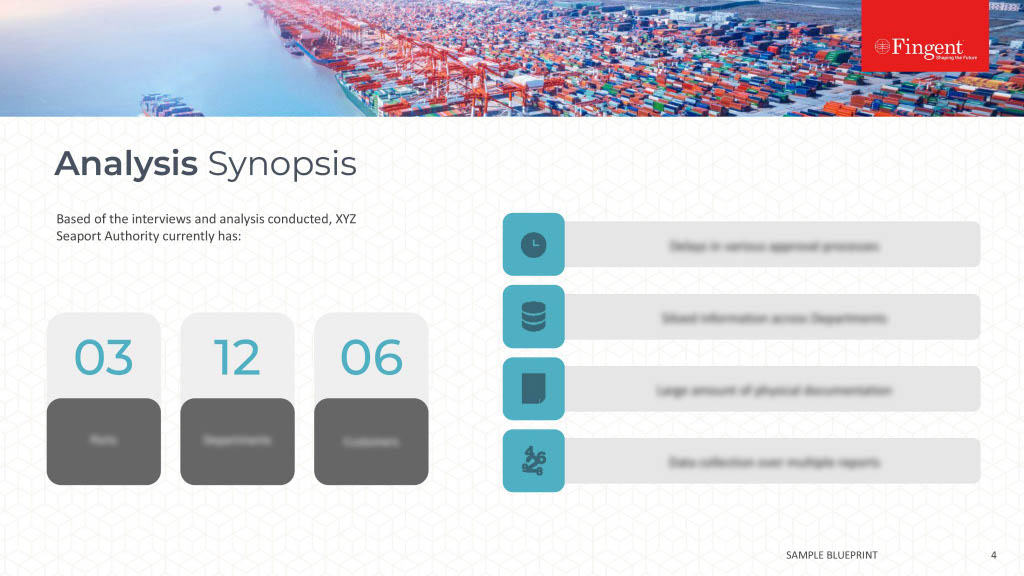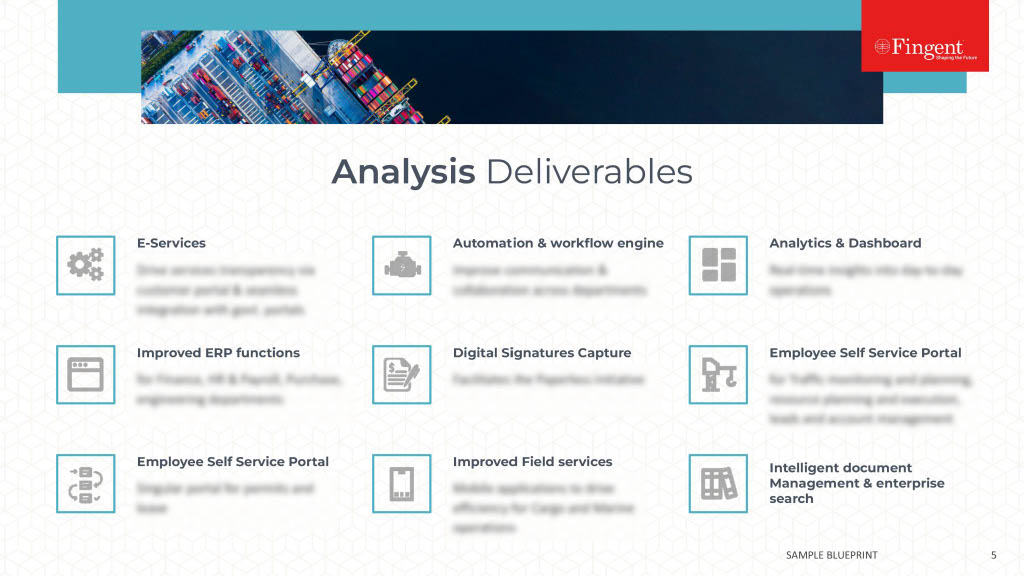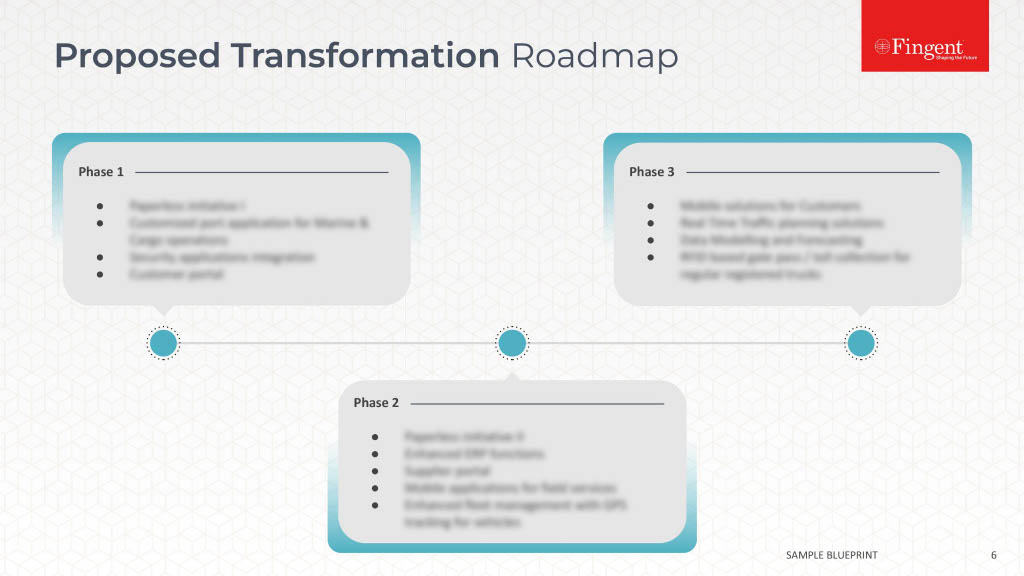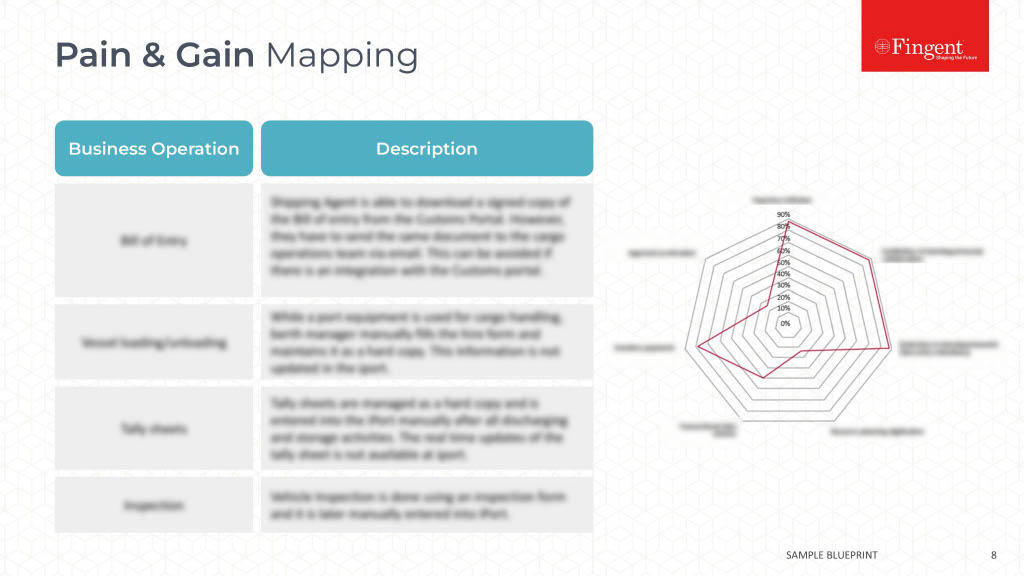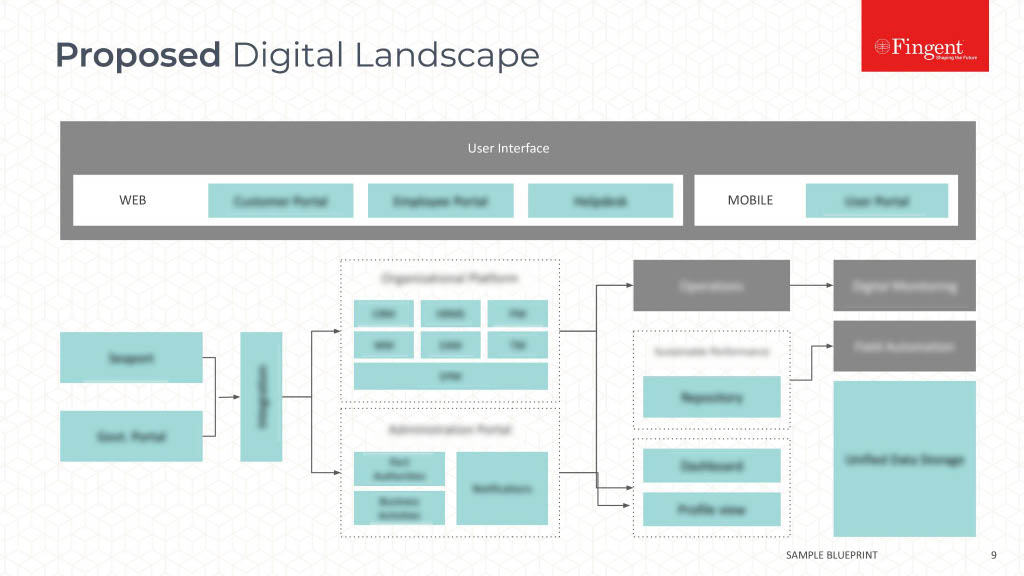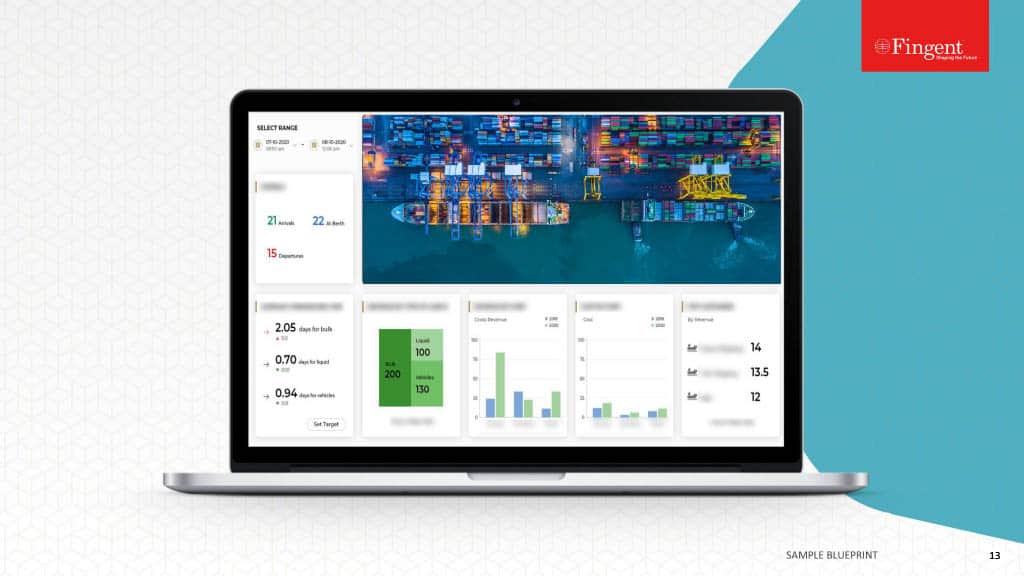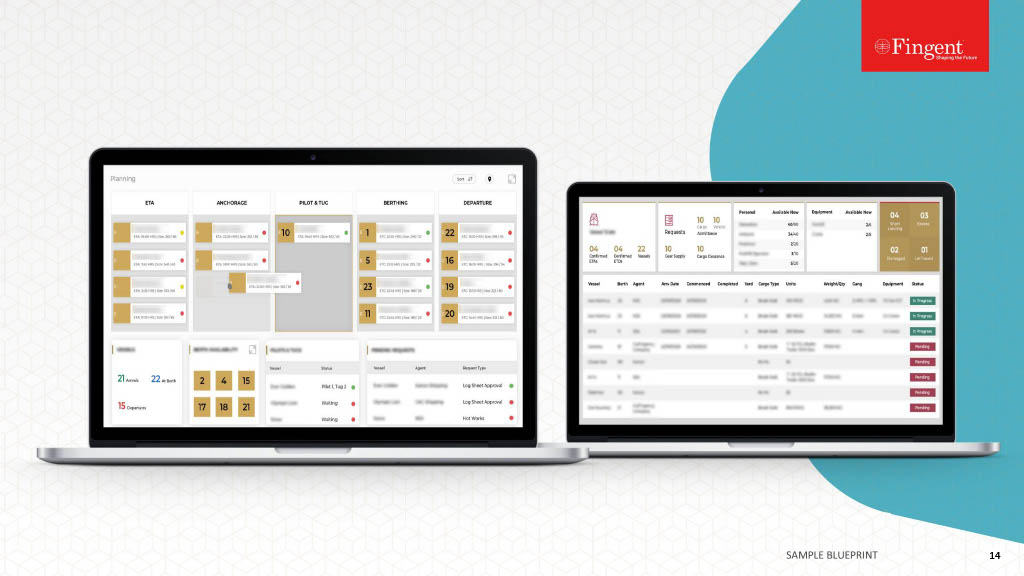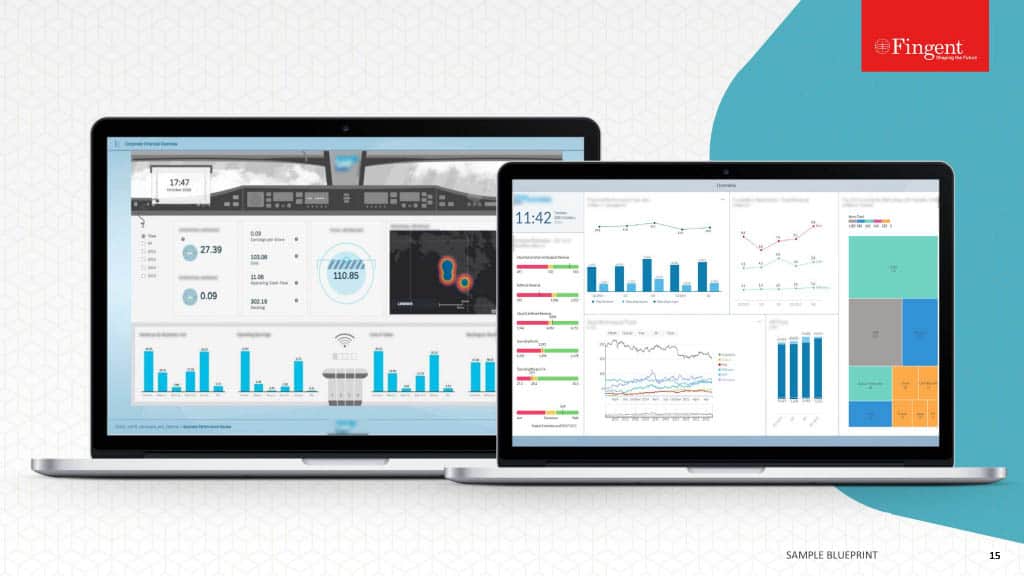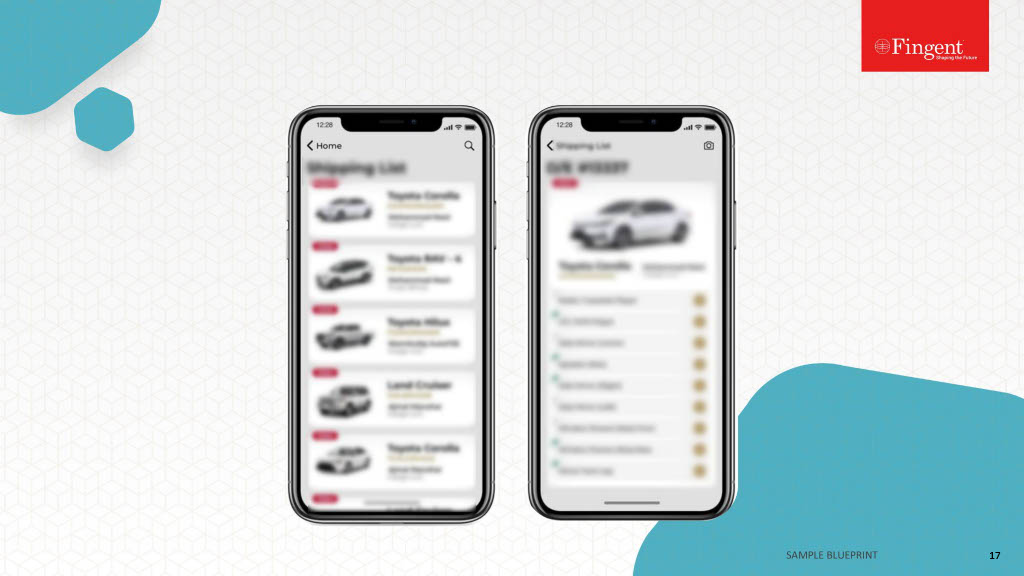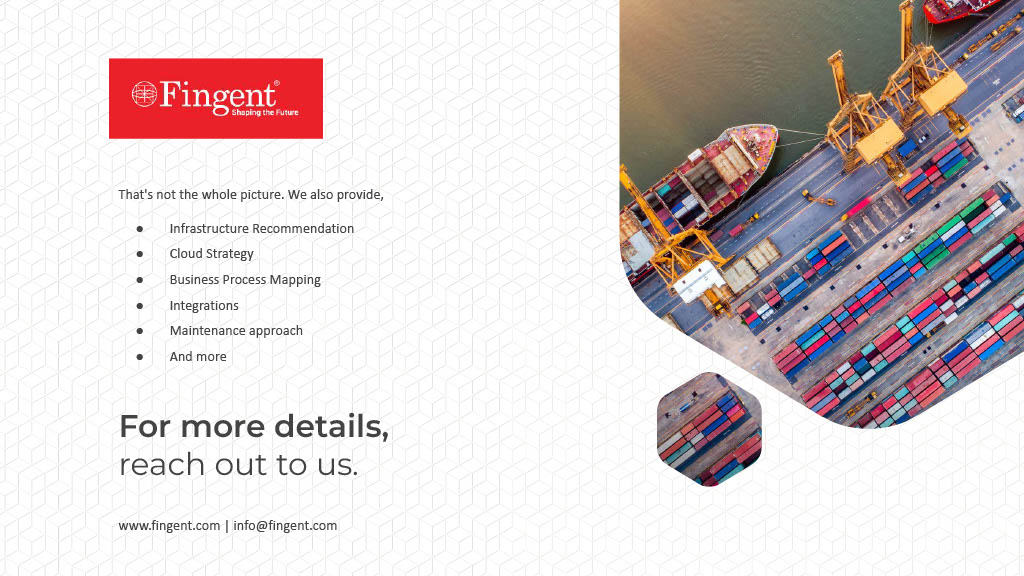Category: Business
How to Attain More Business Value with AI Implementation
The potential of Artificial Intelligence (AI) is being harnessed by businesses to implement automation across several industries and to augment their efforts to provide stellar customer experiences. The incomparable precision, speed, and accuracy of AI-enabled solutions are driving an AI revolution and this blog will discuss five specific ways you can attain business value with AI adoption.
AI: A new approach to customer experience
IBM, one of the leading universal AI champions reveals that 74% of customer experience executives feel that AI will change how customers view their brand. AI provides customers with an experience that appears very similar to human-like interaction. AI-powered apps are highly efficient in enhancing customer interactions.
Automation of “the customer experience journey” through AI enables your business to personalize your marketing campaigns, which will boost the email opening rate. Among other things, AI provides improved customer insights and better customer satisfaction which results in increased conversion and strengthens brand loyalty.
Related Reading: How AI is Redefining the Future of Customer Service
Discover How AI Can Benefit Your Business.
Steps to Gain Business Value with AI Adoption
A study from Market Research Engine estimates that the Artificial Intelligence Market is expected to exceed more than US$ 191 Billion by 2024. The vast growth of information in huge quantities, growth in the adoption of cloud-based applications and services, and an increase in the demand for intelligent virtual/ personal assistants are the major driving factors behind the booming AI market.
Unfortunately, many are still unsure of how to adopt AI, and how it can be used to yield maximum results. We present you these 5 steps to adopt AI which will help you gain the maximum business advantage.
1. Map out a clear customer-centric strategy
The best way to do this is to analyze recent customer journeys with your brands such as discovery, presales, sales, and customer service. Such analysis will help you understand the experience your customers are having with your brand. Research director at Gartner, Olive Huang said, “Your business results depend on your brand’s ability to retain and add customers.” Hence it’s important to deliver a highly personalized experience to every one of your customers. Once that strategy is crafted, it can be delivered through AI.
Related Reading: 6 Ways Artificial Intelligence Is Driving Decision Making
2. Diagnose the problem
Just as the prudent diagnosis of a disease is crucial to helping a patient improve their health, finding out your specific business problems will help you use AI to improve business value. Organizations need to be clear about what AI can help them accomplish. Once the problem is identified, aligning AI to business priorities becomes easier. The beauty of AI algorithms is that once algorithms are enabled to solve one aspect of the business successfully, it can easily be adapted for use in other aspects of the business too.
3. Establish a governance program for customer experience
Before you begin your journey with customer experience, make sure to establish a governance program. The benefit of having a central team working on the AI project is that you can integrate program oversight with a complete comprehension of AI-related initiatives. This is true even when your customer experience teams are just in the learning process. Build a program to supervise development activities and business implications and set brand guidelines for AI technologies such as NLP. Also, establish standards to gauge the impact of customer experience initiatives and its correlation with ROI.
4. Bring the best onboard
Creating a custom AI solution is recommended over buying it readymade. It is important however that you bring in the best talent. Bringing in a team of dynamic people who can create exciting ways to engage with the customers sends a powerful message to your competitors. It will also put your organization on the radar as a tech-savvy innovator.
Read our latest white paper: How Could Your Business Use AI to Achieve Higher Profits & Growth
5. Prepare to store
A business that fails to look into the future fails to grow. Gathering relevant data allows organizations to derive greater benefits far into the future. Meaningful data help AI systems in achieving your organization’s objectives. Insufficient data could compromise the accuracy of AI applications, so get your team to build relevant data including cases and codes.
Drive Business Value With AI
Organizations are adopting AI faster than anticipated. To gain long-term and sustainable business value from Artificial Intelligence, you need to develop a robust implementation approach that takes into its fold, even the minute aspects of your enterprise. Contact us to adopt the power of AI into your business.
Stay up to date on what's new

Featured Blogs
Stay up to date on
what's new



Talk To Our Experts
How to Determine If Your Business Process Qualifies for Automation
A large number of businesses are adopting Robotic Process Automation (RPA) today to drive their critical enterprise operations quickly and affordably. While RPA offers a wide array of automation capabilities, you need to first identify which of your business processes are ideal to be automated so that your business enhances operational efficiencies to deliver positive outcomes. For instance, some companies achieve better outcomes when implementing rule-based automation when compared to non-standardized, variable types. Forrester recently reported that RPA Market will reach USD 2.9 billion by 2021, which makes it one of the most sought-after enterprise technologies. The picture is clear: it is crucial for companies to know the different ways to determine which of their business processes need automation.
This post attempts to walk you through the major questions and answers which can help you decide the candidature of a process for Robotic Process Automation:
Criteria to determine if a process is fit for RPA automation
Deciding whether a business process requires RPA implementation or not depends on two criteria:
- Process Fitness
- Automation Complexity
Process Fitness
To determine if a process is reasonable enough to offer tangible results by implementing RPA, it is first critical to understand the process type being considered. RPA can automate only clear and well-defined processes. For this, it is first required to know which category the workforce’s tasks belong to:
Repetitive/ Automatable processes
Automatable processes relieve the human workforce from performing repetitive tasks such as clerical and data entry works or data manipulation tasks. Automating such redundant tasks allows human workers to focus on core, value-adding functions.
We can differentiate four types of processes:
- Manual and Non-Repetitive Processes: The steps are performed by humans and are performed every time the process is executed.
- Manual and Repetitive Processes: The steps are performed by the user. A few of these steps are the same every time they are executed.
- Semi-Automated and Repetitive Processes: A few of the steps in these processes are already automated, using Macros, Outlook rules, and so on.
- Automated Processes: These processes are those that have already been automated by technologies other than Robotic Process Automation.
While the above four are somewhat repetitive/ automatable, there is another category: Manual Or Non-Repetitive processes that are not great candidates for RPA. This is because these processes need to stay manual or are non-repetitive due to the high exception rate or factors that cannot be integrated into business logic.
Rule-Based Processes
For a process to be automated, it should be rules-based. Human-made rules are applied based on which the system executes the process. Rules can be related to storing, sorting, and manipulating data. The rules-based system is a logical program that uses a predefined logic to interpret data or make decisions. These processes are always easy to use and understand. The rules-based processes have an exception rate which is either low or can be included in the business logic as well.
Standard Input Processes
Standard input processes are those that need to be either electronic/ easily readable or are readable using a particular technology that can be associated with RPA. An example of a standard input process is the OCR. The Optical Character Recognition or OCR algorithms have processes whereby printed or handwritten documents are scanned and analyzed automatically and the text data is converted into editable formats for efficient processing. Using OCR is a much more reliable way to automate tasks such as invoice processing.
Stable Processes
Stable processes are processes that have remained the same over some time and no changes are expected in the coming months. These processes are good candidates for automation, provided they meet with other critical criteria as well. The output of these processes is fairly predictable.
Related Reading: Robotic Process Automation: Choosing The Right Solution For Your Business
Automation Complexity
It’s also crucial to analyze the complexity of a process to see if it’s fit for automation. The complexity of deciding to automate a process depends on several factors such as the number of applications or systems, the number of times human intervention is required, or even the number of steps required to execute the given task.
Following are some of the factors you need to look at:
- Number Of Screens: RPA in this scenario works by programming the robot to perform functions at the screen level. That is, when the screen changes, the logic is taught. The number of screens is directly proportional to the elements to be captured and configured. For instance, the higher the number of screens, the larger is the number of elements to be captured and configured before process automation.
- Types Of Applications: There are different types of applications. Some can be easily automated such as the Microsoft Office Suite or Java. Some other processes require complex automation effort, such as Mainframe applications.
- Business Logic Scenarios: The complexity in automating a process increases with the increase in the number of decision points within the business logic.
- Types And Number Of Inputs: Standard Inputs are desirable. For instance, an invoice that is a standard input and needs to be configured for each supplier will be impacted by automation. On the other hand, non-standard inputs will have varying complexity grades. Among these, free text is the most complex one.
Using the above-mentioned four factors, the processes can be split into four major categories:
-
No RPA Processes
These are processes in which change happens frequently. The system environment is volatile and multiple non-digital or manual actions are needed.
-
Semi-Automation Processes
Semi-automated processes are fragmented down into multiple steps that are automated. These steps include the ones that need to be manual such as the validations of physical security tokens.
-
High-Cost RPA Processes
These processes are digital and can be automated. High-cost RPA processes either make use of some complex technologies such as Optical Character Recognition or OCR or require advanced skills in programming.
-
Zero-Touch Automation Processes
These processes are digital and involve a highly static system and process environment. This makes it easy to be broken into instructions and define simple triggers.
The Stages In RPA Implementation
RPA offers a multitude of ways in which the degree of automation can be increased. There are commonly 6 stages involved in RPA implementation:
- RPA Preparation: Here, the processes are defined, assessed, prioritized, and then the plan is implemented.
- Designing The Solution: Here, each process to be automated is documented ( as “as is” and ”to be”). The architecture is now created and reviewed. This is followed by the preparation of test scenarios and environments. With this, the solution design is now created and documented for each process.
- Building the RPA: In RPA building, the processes are automated, the workflows are tested, and validated. This is followed by the preparation of the UAT.
- Testing the RPA: The UAT is now performed, followed by the debugging of the workflows. The process is now ready to be signed off.
- Stabilizing the RPA: In this phase, initially, the Go-Live is prepared. The process is then moved to production, monitored, and measured. The lessons learned are now documented.
- Constant Improvement Phase: This phase involves the assessment of process automation performance. This is followed by tracking the benefits and managing the changes.
Download our latest white paper: How RPA Simplifies Business Operations
Utilizing RPA Effectively
Every company planning to use/ already using RPA applies automation to fulfill different operational goals. While businesses at the beginning of their RPA journey want to uncomplicate and rapidly execute their workflows, the veterans in RPA might wish to expand the scope of their existing automation solution and improve their regulatory compliance. Each one wants to leverage technology differently.
Whatever your goal is, Fingent top custom software development company helps businesses in leveraging RPA to deliver high business value, drive significant cost benefits, and enable technology to have a positive impact on your operational activities. Get in touch with us to know how we can realize your automation goals.
Stay up to date on what's new

Featured Blogs
Stay up to date on
what's new



Talk To Our Experts
5 Tips To Select The Ideal Chatbot For Your Business
Chatbots have opened up a whole new realm of communication between humans and machines. They enhance a company’s customer service and improve operational efficiency, driving better engagement, reduced churn rates, and overall sales growth. They have become immensely popular and their popularity only continues to increase. It is clear that the use of chatbots is imperative for your business success.
In this blog, we will take a look at the types of chatbots available and how to wisely select the chatbot that suits your business.
The Wide Array of Bots
Studies predict that by 2021, more than half of the enterprises will increase their investments in chatbots, creation than traditional mobile app development. Customers would prefer to get real-time answers from bots on a company website.
Chatbots can do just about anything. They can help you deliver a surprise gift to someone you love. They can also help you break up with your lover and much more!
Broadly, chatbots can be classified as follows:
- Action Chatbot: In order to follow through with a specific action, this type of chatbot requests relevant data from the customer.
- Social Messaging Chatbot: It utilizes social messaging platforms and allows customers to interact with the chatbot directly on social media.
- Scripted Chatbots: It uses a predefined questionnaire to interact with the customer.
- Natural Language Processing (NLP) Chatbots: Being an application of AI, NLP enables chatbots to understand the written or spoken language and come up with the best response.
- Contextual Chatbots: It is the most brilliant of all chatbot types. Since it is based on artificial intelligence and machine learning, it can self-improve over time.
Tips To Choose A Perfect Chatbot For Your Business
As a communication agent, chatbots play a vital role in automating mundane tasks in an “always-on” work environment. Chatbots can handle day to day queries until an emotive or complex issue arises, which might require the intervention of a trained human agent to address it.
Related Reading: Capitalizing on AI Chatbots Will Redefine Your Business: Here’s How
Here are a few pointers to select the perfect chatbot for your business needs:
1. Think about your target audience
Like every business that has a target customer, the chatbot too must have a target audience. It is important to remember that the chatbot should serve as the bridge between you and your customers. The bot should be able to understand the preferences of your customers and cater to their convenience.
2. Define objectives
Identifying and narrowing the specific tasks or areas you want to automate would yield maximum benefits. There are a few points that could help your business define those objectives. Carefully consider factors such as the platform where the chatbot would be used, the queries it would answer, the queries it would direct to a human customer care executive, and how it would manage the hand-over process smoothly.
3. Define your value proposition
The value proposition involves ensuring that the most vital factor of your business, is given prime consideration. It determines whether your customers will come to you or go to your competitors. A higher value proposition might require AI or ML capabilities; so gauge and determine your value proposition to select the right chatbot that fits your budget and your business needs.
4. What is your response speed?
According to the 2018 State of Chatbots Report, customers want quick and easy answers. Customers might get frustrated if the answers are delayed. The appropriate selection of chatbots can help you avoid such kind of delays effectively. When dealing with a complex issue, ensure that your chatbot is capable of collating information quickly without delay. If there is a need to hand over the query to a human customer care agent, it should be done seamlessly and fast.
5. Evaluate features and functionalities
Evaluation aids your business in identifying the essential features and functionalities required from a chatbot to run your business successfully. To begin with, you could create a set of standards that would analyze all solutions. Decide on which features are required, such as NLP, integrations, contextual awareness, analytics, and so on. Proper documentation is required while evaluating the features. Such a candid evaluation helps a business choose the right chatbot that could be fine-tuned later or could self-learn.
Download our case study: Using chatbots to create an enhanced and engaging learning experience
Make Your Business Chatbot Ready
In the 24/7 era where customers want instant services, chatbots help businesses to keep pace with such expectations. By evaluating your own objectives and keeping in mind your customers’ expectations, your business can maximize the benefits of chatbot technology. However, choosing the right chatbot that fits your organizational needs and implementing it without any flaws require a good deal of expertise.
Our team at Fingent has been doing amazing things with Chatbots for our clients. Recently, we provided a matured chatbot assistant technology to a client, which provides comprehensive user intent identification and processing as well as satisfactory response according to the user query. Chat with us to identify the best chatbot solution for your business, and learn how we can implement it for you quickly.
Stay up to date on what's new

Featured Blogs
Stay up to date on
what's new



Talk To Our Experts
You are planning to build an app for your business. You zero in on the app features, then develop it and finally release your app to the respective stores. You actively monitor your app’s usage and analytics. Your users are happy and they actively use your app. After a while, you notice a dip in the curve.
Your app starts falling behind in-store listings, garners poor user reviews, becomes frequently prone to errors. Then one day you get an email from the respective app store that your app might be removed if it does not meet the latest requirements of the app store.
So, what went down?
Well, did you ever take the effort to continue maintaining the app? Delivering updates on a timely basis so that your app stays compatible with current requirements and is well ahead in terms of features, functionality, security, and performance is a vital part of app development.
You might have built the perfect app, but how long can it remain active and not pass out as obsolete without proper maintenance?
As an enterprise app development company, our experience has shown us that creating and deploying an app is sensible and profitable in the end only if you tie it up with a regular update cycle. We put equal stress on pairing a solid maintenance contract having timely release cycles into every mobile app that we built and always insist on our clients on the importance of having one.
Ongoing maintenance remains indispensable in app development
In 2016, Apple made a relentless push clear its App Store for all outdated apps, delisting 50,000 apps according to a report by Sensor Tower. It further revealed that 51 percent of apps haven’t received any updates in a year.
Source: Sensor Tower
Earlier, you build an app and launch it. You only need to focus on developing the app in the best possible way. However, things have changed. Ongoing maintenance is so important now that almost 80 percent of developers release some form of updates to their apps every month.
Performing maintenance constantly, reinvent your app’s functionality and fix any bugs or other latent issues. It’s unlike the build and deploy once approach that was employed traditionally.
To keep up with the ever-changing user and app store requirements, you should not only build, deploy and optimize your app for the store listing but also improvise it by regularly issuing new updates. Like a newly constructed house that requires additional investment and efforts at maintenance like cleaning, painting and other upgrades, your apps should similarly go through a regular upkeep cycle to keep it active.
Besides, setting up a maintenance plan is so important for your business as several external variables are prone to changes that can affect your app’s functioning. These include:
- Mobile hardware: As handset manufacturers keep releasing newer models each year, mobile apps can become incompatible with the latest mobile hardware, causing them to fail. With a maintenance plan, you can continuously deliver new updates that extend support to all the latest mobile hardware specifications.
- OS versions: Android and iOS are evolving with new version upgrades every year and your mobile app should take into account these changes to extend support and compatibility with upgraded OS versions.
- User Interface: Material Design, Google’s visual design language, marks the change from Skeuomorphic principles towards a fresh approach to user interface design. Keeping up with the current user’s preferences meant adopting newer UI/UX design standards for the app interfaces offering immersive digital experiences.
- Security: With data breaches now commonplace, you should integrate all recent security protocols into your apps to uphold privacy and security.
- Programming languages: Programming languages use to build apps also undergo changes and your apps should stay updated considering these variations.
- Software libraries: Third-party software libraries and dependencies used in apps go through frequent changes, which affects your app’s functioning and cause it to malfunction if they are not upgraded.
- Licensing: Apps that you build has to be tied down to licensing agreements and certifications. These agreements are a limited time offer and therefore need to be renewed periodically to keep the app intact and functional throughout its lifetime.
- Hosting infrastructure: The platform where your app’s database and backend are hosted such as AWS can also be subject to changes throughout the year.
Signing maintenance contracts save your app from getting outdated
Post completion, your vendor may ask about maintenance contracts for your app. Most businesses decline to sign up for a maintenance contract, because to them, the idea of paying extra amount for an already launched app sounds absurd and unconvincing. However, considering the necessity of app maintenance, it is mandatory that a maintenance contract is bought in and formulated alongside the actual development.
Once you sign up for a maintenance contract, you get the dual advantage of both support and regular updates. Every issue that crops up will be dealt with immediately by the development team once you enroll for a maintenance contract, thereby significantly reducing your app’s downtime. Besides, when platform changes occur, such as new OS versions or hardware, your app development partner can review them in advance and plan all future updates accordingly.
Understanding maintenance costs
Maintaining your app continually comes with its costs, which can vary depending on the scope and functionality of the app. Clutch, in one of their surveys, outlines that post-launch maintenance can cost anywhere between $5000 – $10,000, a year after launching the app, which varies based on the vendor opted.
However, maintenance costs follow the standard industry norm, which is 20 percent to that of the initial development cost. For instance, if your app costs about $10,000 to develop then maintenance would run around to $2000 a year. This is subject to vary as it takes into account several other factors like the type of app – native or hybrid, additional features – (push notifications, payment gateway), backend hosting platform, use of third-party analytics tools, etc.
So, what real benefits does your business gain by signing up for a maintenance contract with an app developer?
- Lower Uninstall Rates – AppsFlyer in their newest report shows that the global uninstall rates for apps in a month account for about 28 percent. Timely maintenance can come to the rescue by promptly applying all the first time fixes to the app, which retain your active users lowering the chances of uninstalling.
- Sustained User Loyalty – Constant maintenance does finally pay off via sustained user loyalty across the app’s entire lifetime, which is one crucial ingredient that defines your app’s success in the long run.
- High Rankings in Store Listings – Keeping up with ongoing maintenance ensures that your app adheres to quality guidelines and is constantly optimized based on updates and user feedback for properly ranking in the store listings.
- Adaptation Centered on User Feedback – Recurrent maintenance helps monitor usage patterns to retrieve business insights and create individual user funnels. Using in-app analytics tools, developers can analyze the app’s functioning and resolve any crashes or bugs for flawless user experience and improved retention.
- Increased ROI – With a solid maintenance plan in place, your app can achieve long term benefits for your business by reaping higher financial gains, leading to increased ROI. Besides, you can decrease the overall costs by monitoring the app post-launch and removing redundant features that most users ignore or skip by.
Conceive a maintenance plan by collaborating with your app development partner
Finding a reliable app developer with expertise in building enterprise applications helps kick start your app’s development and maintenance cycle. Once signed up, the development team assesses your app’s performance after launch. Taking incoming feedback from users and identifying the potential issues mentioned, the team adopts an end-user development approach to detect bugs and other performance issues beforehand and proactively fix them.
You can get the best in class maintenance support for your mobile app with our application development services. Talk to our consultants today and see how Fingent top custom software development company, helps you conceive the right maintenance strategy for your app that yields new revenue streams and enhance your business outcomes.
Stay up to date on what's new

Featured Blogs
Stay up to date on
what's new



Talk To Our Experts
4 Top Reasons for Organizations to Move to Python 3
Python is one of the most widely used programming languages on the planet. Over the years programmers have fallen in love with Python for its increased productivity and capabilities. However, a constant argument persists on whether Python 3 is better than Python 2 and would it be a wiser decision to completely shift to Python 3.
Although Python 3 has been in existence for over 7 years, programmers are quite skeptical about using it. Most programmers tend to cling to Python 2, completely ignoring the capabilities of the new version.
This blog will walk you through some major drawbacks of Python 2 and will pinpoint 4 top reasons on why to choose Python 3 over Python 2.
Why Is Python 3 On The Rise?
Before we dive deeper into the major advantages of Python 3, let’s take a look at its origin.
Released in 2008, Python 3 was introduced to overcome the flaws of Python 2. The major reason behind developing Python 3 was to clean up the codebase and remove redundancy. Although Python 3 is the newer version of Python, it is not necessarily backward compatible with code written in the 2.x version.
Significant features of Python 3 makes it simpler, easier and incredibly efficient to use. Here’s listing the major differences between Python version 3.0 and 2.0, and the reasons why Python 3 can make a better programming partner.
1. Unicode Character Encoding
As mentioned earlier, Python 3 was introduced to address the vulnerabilities and drawbacks of Python 2. Hence, it reduces the complexities of coding and improves speed and performance.
Where in Python 2 the character encoding is done in ASCII format, Python 3 is Unicode based. In Python 2 the strings are by default stored in the form of ASCII values. Programmers are required to add ‘u’, to store strings specifically in Unicode format. In Python 3 strings are stored in UTF-8 format, enabling a large number of storage features such as character value storage, different language characters, and emojis storage as well.
Dropped deprecated features which were frequent sources of bugs in Python 2 have also been replaced by superior alternatives and retained solely for backward compatibility.
For instance: If a file is created by with non-ASCII characters in the name, for the below-mentioned code, if you are using Python 2 your code is sure to throw an error 500.
However, in Python 3 your error will be detected right away saving you the time on long code creation. Moreover, the error message is much easier to understand. Knowing that str object is owner and node is a bytes object, it is easy to recognize that the error is due to listdir returning a list of bytes objects.
Adding listdir(‘.’) would make the bug disappear as this would appear as a Unicode string in Python 3.
The difference in the behavior is due to the difference in how each version handles the string type. Whatever is lumped together in Python 2 is split in Python 3.
2. Improved Library Standards
When it comes to libraries, there is a huge difference between the two versions. Many libraries developed in Python 2 are not forward compatible. Hence, the new 3.x version is developed focusing on providing good compatibility. Moreover, most of the actively maintained libraries are strictly created for use with Python 3. Hence, it’s suggested to keep codes compatible with Python 3 to help keep your test running on both versions.
3. Improved Integer Division
Reducing a programmer’s confusion and frustration, Python 3 is created with a syntax that’s more intuitive. Python 3.x version has an elegantly designed structure that allows performing an action with fewer lines of code. Python 2, on the other hand, requires the exact input to perform a particular result or generate the expected results.
For instance: If you try a simple calculation like 5/2 (5 divided by 2), Python 2, after rounding up would give you the result as 2. To derive the exact result, that is 2.5, the input should be 5.0/2.0.
Whereas, Python 3 would right away, give you the answer 2.5 for the input 5/2, without converting the numbers to float data type.
4. End of Python 2 Support
Yes! Python 2 is expected to stop all support and maintenance by January 2020. Now, this is another major reason why you need to shift to Python 3 at the earliest. By end of support, we mean that all-new packages will be built on Python 3 and hence, it will be difficult to add any new features to the existing Python 2 projects. Major plugins are also being ported to Python 3 and thus, the upcoming updates of these plugins will be available only for the 3.x version.
Moving forward, it will be difficult to find any Python 2 support services or developers. Also, the Python 2 hosting options will grow more scarce and costly. The Python 3.x version and the releases ahead are believed to have different syntax from that of the current version and thus, getting upgrades for existing features would be difficult to find.
Why Should You Stop Using Python 2?
Although programmers have widely accepted and loved working with the 2.x version of Python, there is quite a huge list of flaws and drawbacks experienced with it. Here’s listing a few of them.
1. Firstly, as mentioned in this post, the Python 2 text model is not Unicode capable. It doesn’t handle non-ASCII files correctly. This is one of the major drawbacks of the version. Python 2 handles Unicode module names quite inconsistently, which is a source cause of multiple programming errors. That is why 3.x version of Python is designed to have a Unicode based string type by default.
2. In addition to not being Unicode capable, there is a large number of Unicode handling bugs in Python 2 standard library that might never be fixed. Fixing these bugs within the constraints of Python 2 is too difficult, and not worth the effort.
3. Python 2 iterator was designed long before the introduction of the iterator protocol. Thus, it has a lot of unnecessary and lengthy listings, which can now be made more memory efficient.
4. Programmers who have been involved with Python 2 for a long time might have noticed that the version interprets numbers in a strange way if they have leading zeros. Also, the version has two different kinds of integers. Python 2 beginners are often surprised to find that the version can’t do basic arithmetic correctly.
5. The print and exec statement is also weirdly different from the normal function calls like eval and execfile. Moreover, you need parentheses to catch multiple exceptions.
6. Although list comprehensions are one of Python’s most popular features, surprising errors arise on the local namespace. Also, if you tend to make a mistake in handling the errors, there might be chances where you’ll lose the original error.
Eliminating all these persisting errors and flaws of Python 2, the new version 3.x is specifically designed to enhance the quality and efficiency of the programmers. Thus, it is highly recommended to start preparing for a complete shift to Python 3. For developers who would like to check on to the Python 3 upgrade packages, here’s the command you can use:
[Don’t forget to create a test-requirement.txt file when using the command.]
With increased competition and high consumer expectations, programmers are under constant pressure to improve software performance. With the efficiency and ease of use offered by Python 3, programming is sure to achieve greater success than before. Although Python 2.7 will be supported until 2020, the sooner the switch, the better.
If you are looking for a technology partner to help your business transform with the latest digital trends, then get in touch with our custom software development experts today!
Stay up to date on what's new

Featured Blogs
Stay up to date on
what's new



Talk To Our Experts
Data Mining Vs Predictive Analytics: Learn The Difference & Benefits
With big data becoming the lifeblood of organizations and businesses, data mining and predictive analytics have gained wider recognition. Both are different ways of extracting useful information from the massive stores of data collected every day. Often thought to be synonyms, data mining and predictive analytics are two distinct analytics methodologies with their own unique benefits.
This blog examines the differences between data mining and predictive analytics.
Difference Between Data Mining and Predictive Analytics
Data mining and predictive analytics differ from each other in several aspects, as mentioned below:
Definition
Data mining is a technical process by which consistent patterns are identified, explored, sorted, and organized. It can be compared to organizing or arranging a large store in such a way that a sales executive can easily find a product in no time. Various reports state that by 2020 the world is poised to witness a data explosion. Therefore, data mining is a strategic practice that is necessary for successful businesses. It helps marketers create new opportunities with the potential for rich dividends for their businesses.
Predictive analytics is the process by which information is extracted from existing data sets for determining patterns and predicting the forthcoming trends or outcomes. It uses data, statistical algorithms, and machine learning techniques to identify the likelihood of future outcomes based on historical data. In other words, the aim of predictive analytics is to forecast what will happen based on what has happened.
Techniques and Tools
Although there are many techniques in vogue, data mining uses four major techniques to mine data. They are regression, association rule discovery, classification, and clustering. These techniques require the use of appropriate tools that have features like data cleansing, clustering, and filtering. Python and R are the two commonly used programming languages in data mining.
Unlike data analytics, which uses statistics, predictive analytics uses business knowledge to predict future business outcomes or market trends. Predictive analytics uses various software technologies such as Artificial Intelligence and Machine Learning to analyze the available data and forecast the outcomes.
Purpose
Data mining is used to provide two primary advantages: to give businesses the predictive power to estimate the unknown or future values and to provide businesses the descriptive power by finding interesting patterns in the data.
Predictive analytics are used to collect and predict future results and trends. Although it will not tell businesses what will happen in the future, it helps them get to know their individual consumers and understand the trends they follow. This, in turn, helps marketers take necessary, action at the right time, which in turn has a bearing on the future.
Related Reading: Predictive Analytics: The Key to Effective Marketing and Personalization
Functionality
Data mining can be broken down into three steps. Exploration, wherein the data is prepared by collecting and cleaning the data. Model Building or Pattern Identification by which the same dataset is applied to different models, thus enabling the businesses to make the best choice. Finally, Deployment is a step where the selected data model is applied to predict results.
Predictive analytics focuses on the online behavior of a customer. It uses various models for training. With the use of sample data, the model could be trained to analyze the latest dataset and gauge its behavior. That knowledge could be further used to predict the behavior of the customer.
Talent
Data mining is generally executed by engineers with a strong mathematical background, statisticians, and machine learning experts.
Predictive analytics is largely used by business analysts and other domain experts who are capable of analyzing and interpreting patterns that are discovered by the machines.
Outcome
Data mining enables marketers to understand the data. As a result, they are able to understand customer segments, purchase patterns, behavior analytics and so on.
Predictive analytics helps a business to determine and predict their customers’ next move. It also helps in predicting customer churn rate and the stock required of a certain product. Additionally, predictive analytics enable marketers to offer hyper-personalized deals by estimating how many new subscriptions they would gain as a result of a certain discount, or what kind of products do their customers seek as a complement to the main product they bought from the seller.
Related Reading: Using Predictive Analytics For Individualization in Retail
Effect of Data Mining and Predictive Analytics on the Future
The global predictive analytics market is estimated to reach 10.95 billion by 2022. We are now in a period of constant growth, where businesses have already started using data mining and predictive analytics sift through the available data for searching patterns, making predictions and implementing decisions that will impact their business.
Both approaches enable marketers to make informed decisions by increasing productivity, reducing costs, saving resources, detecting frauds, and yielding faster results. To make the best use of data mining and predictive analytics, you need the right guidance and the best expertise. Talk to our experts and find out how Fingent, top custom software development company can help your business scale up with the power of data. Get on your way to a digital-first future with us.
Stay up to date on what's new

Featured Blogs
Stay up to date on
what's new



Talk To Our Experts
Can Data Warehousing Enhance the Value of Data Visualization & Reporting?
Organizations rely heavily on data to make crucial business decisions. Hence, it is important for your business to have access to relevant data. That is where a well-designed data warehousing comes to your rescue!
Besides gaining actionable insights, corporate executives, business managers, and other end-users make more informed business decisions based on historical data.
Today’s Analytics and Business Intelligence solutions provide the ability to:
- Optimize business processes within your organization
- Increase your operational efficiency
- Identify market trends
- Drive new revenues
- Forecast future probabilities and trends
Before understanding how data warehousing can add more value to data visualization and reporting, let’s take a look at what these terms mean.
Analytics and Business Intelligence
Business Intelligence is a process that includes the tools and technologies to convert data from operational systems into a meaningful and useful format. This helps organizations analyze and develop meaningful insights to take timely business decisions. The information derived from these tools demonstrate the root cause of your business problems and allow decision-makers to strategize their plans based on the analysis.
Business Intelligence is information not just derived from a single place, but multiple locations and sources. It can be a combination of the external data derived from the market and the financial and operational data of an organization that is meaningfully applied to create the “intelligence”.
Data Warehouse
Data warehouse is a repository that collects data from various data sources of an organization and arranges it into a structured format. An ideal data warehouse set up will extract, organize, and aggregate data for efficient comparison and analysis. Data warehouse supports organizations in reporting and data analysis by analyzing their current and historical data. This makes it a core component of Business Intelligence.
Unlike a database, that stores data within, at a fully normalized or third normal form (3NF), a data warehouse keeps the data in a denormalized form. It means that data is converted to 2NF from 3NF and hence, is called Big Data.
Key benefits of a Data Warehouse
- Combine data from heterogeneous systems
- Optimized for decision support applications
- Storage of historical and current data
Why We Need Data Warehouse for Business Intelligence?
Before the business intelligence approach came into use, companies used to analyze their business operations using decision support applications connected to their Online Transaction Systems (OLTP). Queries or reports were retrieved directly from these systems.
However, this approach was not ideal due to:
- Quality issues
- Reports and queries were affecting business transaction performance
- Data resides in heterogeneous sources
- Non-availability of historical data
- Non-availability of data in the exact form required for reporting
Connecting your organization’s business intelligence tools to a data warehouse can provide you benefits in terms of production, transportation, and sale of products.
Data Visualization vs. Data Analytics – What’s the Difference?
Data Warehousing and Business Intelligence Using AWS
Today, traditional BI has given way to agile BI where agile software development accelerates business intelligence for faster results and more adaptability. Big Data is growing fast to provide useful insights for making improved business decisions.
There has been a paradigm shift in data storage with warehousing solutions moving increasingly to the cloud. Amazon Redshift, for instance, is one of the most popular cloud services from Amazon Web Services (AWS). Redshift is a fully-managed analytical data warehouse on cloud, that can handle petabyte-scale data, which enables analysts to process queries in seconds.
Redshift offers several advantages over traditional data warehouses. It provides high scalability using Amazon’s cloud infrastructure to set-up and for maintenance, without the need for upfront payments. You can either add nodes to a Redshift cluster or create additional Redshift clusters to support your scalability needs.
You can use AWS Marketplace ISV Solutions for Data Visualization, Reporting, and Analysis.
Data visualization helps you identify areas that need attention or improvement, clarify factors that influence business such as customer behavior, and making decisions such as finding out a suitable market for your product or predicting your sales volumes, and much more.
TIBCO Jaspersoft, for example, is a solution that delivers embedded BI, production reporting, and self-service reporting for your Amazon data at affordable rates. It features the ability to auto-detect and quickly connect to Amazon RDS and Amazon Redshift. Jaspersoft is available in the AWS Marketplace in both single-tenant and multi-tenant versions. TIBCO Jaspersoft for AWS includes the ability to launch in a high availability cluster (HA) as well as with Amazon RDS as a fault-tolerant repository. Pricing is based on the Amazon EC2 instance, type as well as the chosen single or multi-tenant mode.

Summary
By moving your analytics and business intelligence to a hybrid cloud architecture you will be able to handle huge amounts of data and scale at the rate of expansion required by your business. You will also be able to deliver information and solutions at the speed that your employees and customers demand, and gain insights that will enable your organization to innovate faster than ever.
Business Intelligence and Data Warehousing are two important aspects of the survival of any business. These technologies give accurate, comprehensive, integrated, and up-to-date information on the current enterprise scenario which allows you to take the required steps and make crucial decisions for your company’s growth. To know how your business can benefit from the latest technologies, get in touch with our custom software development experts today!
Stay up to date on what's new

Featured Blogs
Stay up to date on
what's new



Talk To Our Experts
Can Augmented Reality Improve Conversion Rates For Businesses?
Augmented Reality (AR) is a powerful tool that brands are using to bridge the gap between their products and their digitally empowered customers. With the power of AR, customers can see and experience their products without actually trying them on, helping them make purchase decisions instantly. AR is being widely used by many brands as the most cost-effective way to convert strangers into customers and promoters.
Let’s consider why and how top brands are embracing Augmented Reality for immersive customer experience.
Top Brands Embracing AR
When AR technology was pioneered by Ivan Sutherland in 1968, he described his concept of the Ultimate Display as: “The ultimate display would, of course, be a room within which the computer can control the existence of matter. A chair displayed in such a room would be good enough to sit in. Handcuffs displayed in such a room would be confining, and a bullet displayed in such a room would be fatal. With appropriate programming, such a display could literally be the Wonderland into which Alice walked.”
Today we are witnessing the massive affect AR is having on immersive customer experience. Wonderland looks close!
Here are a few examples of top brands that are using AR effectively to achieve this.
LEGO Wear’s AR Shop
LEGO Wear’s first limited-edition clothing line for adults was featured on Snapchat with a uniquely designed Snapcode. This virtual cloth store had no clothes on display but allowed customers to shop virtually on a Snap-triggered portal. Studies reveal that Snachatters engage with Augmented Reality naturally on a large basis.
Around 70% of them play with an AR lens every day. So with the combination of AR and e-commerce leading to exciting customer experience, the company was able to drive sales rapidly.
Watch how AR simplify equipment maintainance
This video is made using InVideo.io
Patron Tequila’ s Immersive Distillery Experience
Patron’s AR app is designed for its tech-savvy customer persona. Understanding the mindset of today’s socially connected generation to know more about the products they consume, the Patron AR app allows its customers to take a virtual tour of their distillery in Mexico giving them a glimpse of the history and origins of the distillery.
Speaking about the success story, the app-enabled more than a million consumers to have a memory of visiting Hacienda without even physically going to the place. Also, thousands of people have interacted with a virtual Patrón bartender, who is actually not a real person at all, but a robust data processing tool to simulate a real-world interaction.
Nike Snaps Up Customers
The Air Jordan Brand in collaboration with Snapchat and Darkstore, out together a virtual experience that brought in record sales last year. Using a special 3-D AR world lens of Michael Jordan circa 1988, taking off from the free-throw line in the slam dunk contest, Nike was able to target Snapchat users around the Staples Center where an NBA All-Star Game was taking place.
Users could walk around the lens and see Jordan changing into the All-Star uniform and the new AJ III Tinkers. In the following event, Snapchat brought out a QR code that users could use to buy the shoes from the Snap Store. The shoes would be delivered within 2 hours. The shoes sold out in 23 minutes!
MAC Cosmetic’s AR-enabled Video Tutorial
In June of this year, MAC cosmetics launched AR-enabled shoppable video tutorials on YouTube in partnership with the beauty influencer, Roxette Arisa. As the tutorial is playing, a ‘try on’ button appears below the video, allowing viewers to try on different shades of lipstick as they continue to watch the tutorial.
Once they have made a choice, they can order the lipstick without leaving the app. MAC sees a huge potential in this as beauty-related content generated more than 169 billion views on YouTube last year.
Speedo’s Customers Try It On Virtually
Early this September, leading swim gear company Speedo launched a mobile app that lets their customers try out their goggles before they buy it. This app is compatible with both Android and iOS phones. Commenting on this feature, Pentland Brand’s head of innovation Ben Hardman said, “This technology will undoubtedly enhance our customers’ shopping experiences by allowing them to interact with the product before they make a purchase. In this instance, it helps them address a well-documented human pain point: leaky goggles.”
AR Is the Future – Are You Ready?
AR technology is working wonders for the sales and productivity of many brands. It is improving its business operations while giving their customers a more immersive and fun experience. Brands are able to market their products in fresh and interesting ways and are seeing great returns.
Fingent works with brands to achieve this for their business. By using AR technology like Microsoft HoloLens and more, we are making AR possible for our clients.
Reach out to us and know how Augmented Reality technology can be used to improve your customers’ experience and scale your business.
Stay up to date on what's new

Featured Blogs
Stay up to date on
what's new



Talk To Our Experts
Can Empowering AI and IoT Bring In Competitive Advantage To Industries?
It takes more than forward-thinking employees to gather customer purchasing trends and improve the customer experience. International companies depend on Artificial Intelligence (AI) and the Internet of Things (IoT) to drive data and forecast the next big wave of trends.
Studies predict Asia and North America to lead in the innovation of AI and IoT. Also, embedded AI in support of IoT smart objects will reach $4.6B globally by 2024.
Major vendors of IoT platforms such as IBM, Amazon, and Microsoft have started offering integrated AI capabilities like ML-based analytics. Scalable digital platforms are designed daily to understand the way customers think while using predictive maintenance in real estate, eCommerce, healthcare, and other industries.
It’s time for us to share the leading examples of how businesses use AI and IoT, and how these technologies benefit them.
AI and IoT: Leading Use Cases
Smart Cities: Making Life Easier
What happens when AI and IoT run a city? It turns into a smart city. Smart city technology can solve an energy crisis, help manage traffic, or improve the healthcare experience.
One example of a smart city is the use of Advanced Transportation Controller technology linked to a 5G network in Los Angeles. There are road-surface sensors throughout the city, and cameras that monitor traffic, sending information to traffic management systems. Municipal employees can now analyze the data of traffic congestion and issues with traffic lights in high traffic areas. Overall, this improves the quality of living in Los Angeles and helps a business run smoothly without delays.
Convenience in Property Management
One of Fingent’s clients WRI Property Management, a US-based single-family rental provider with 10,000+ leased properties and 20,000+ managed houses experienced many challenges. Here are a few of the issues WRI Property Management faced:
- Tenant eviction
- Rent collection/accounting
- Scheduling property inspections
- Leasing properties
- Screening tenants
What happened next? Fingent introduced an advanced software platform, Honey Badger. The AI and IoT technology-supported WRI managers to conveniently communicate with multiple parties, renovating properties, view lives auction feed, track the construction of new properties, etc.
5G Network Vehicle Safety and Security
Machine Learning technology is improving the autonomous vehicle experience. How does it work? An automobile can stop when a driver is in dangerous tragic weather or unexpected situation.
The 5G network can cause the brakes of a car to operate by tracking vehicle sensors of other drivers near prevent or relieve car crashes.
The network can also send drivers a traffic update to use detours and avoid certain roads that are under construction or is unsafe.
AI and IoT Business Benefits
1. Guaranteed Security and Safety
A company’s highest priority is protecting data in the workplace. As Artificial Intelligence scans security footage, IoT can close gates or doors if an intruder attempts to enter the premises of a head office.
Organizations are now using machine-to-machine communication to determine potential security threats with an automated response to hackers or intruders.
An example of AI and IoT in banking security is the detection of fraudulent activity in ATMs to communicate updates to law enforcement to protect customers.
The unexpected workplace accidents can be prevented by using sensors that monitor safety hazards as employees work. Employees at some organizations now wear wearable devices that alert the management of undetected dangers such as carbon monoxide released into the air on a work site.
2. Convenient Shopping Automated Experience
Online shopping is more convenient than ever as websites personalize real-time suggestions to consumers based on a customer’s shopping history. As a result of this investment, Kinsta predicts that by 2021, Artificial Intelligence in e-commerce will increase sales to $4.5 billion from $2.3 billion in 2017.
3. Enhanced Healthcare Experience
NovitaCare, a Netherlands based healthcare company that treats patients with chronic and multiple disorders, wanted to improve the caregiver experience using an effective online platform.
With Fingent’s help, NovitaCare now can communicate with non-profit organizations, patients, providers and researchers with an online platform that is HIPPA compliant.
4. Simplified Management Of Supply Chain
The supply chain industry has experienced challenges in managing unexpected events that happen due to inaccurate forecasting. A solution to the problem is implementing AI and IoT.
Supply Chain Digital recently stated the following about these technologies:
“Intel highlights that the world of IoT is growing rapidly, from 2 billion objects in 2006 to a projected 200 billion by 2020.”
“AI is on most companies’ radars, with 78% of organizations implementing it to enhance operational efficiency by at least 10%.”
The use of real-time devices will feed data to executives to help create contingency plans for preventing unexpected challenges in the industry. As a result, the supply chain and a company’s reputation can experience fewer impacts.
How Fingent Helps Businesses Achieve Success With AI and IoT?
Fingent has mastered the art of technology infrastructure to help companies resolve AI and IoT processes. As a result, it creates efficiencies in managing smart devices.
Implementing these technologies are small changes that can have a huge impact on your business. The ability to use raw data to understand customer behavior and forecast trends in the market can improve customer loyalty. Also, companies can track employees working in multiple departments and locations across the globe by partnering with Fingent.
Fingent is confident that AI and IoT work in your business context by delivering technologies to enable solutions in the cloud, networks and gateways, heterogeneous device support, systems capabilities, and data analytics.
To Conclude
Business Insider predicts that there “will be more than 64 billion IoT devices by 2025, up from about 10 billion in 2018.”
Gartner observes that in three years (by 2020), more than 80 percent of enterprise IoT projects will incorporate at least one AI component. Artificial Intelligence and the Internet of Things is used to improve the safety of drivers on the road, enhance healthcare experiences, automate and streamline enterprise processes, stop intruders from hacking into IT systems or large organizations, and in numerous other ways.
The combination of these technologies not only delivers a superior customer experience, but also forecasts what customers want in real-time, improves their experience of living in smart cities, maintains a high safety rating in challenging workplaces, and reinforces physical and cybersecurity. AI-IoT duo also avoids any unplanned downtime, increases operating efficiency, helps develop new products and services, and improves your risk management.
Are you looking for an AI and IoT partner? Get in touch with Fingent experts today for a streamlined and error-free IoT implementation for your business.
Stay up to date on what's new

Featured Blogs
Stay up to date on
what's new



Talk To Our Experts
Top 6 Reasons Why Implementing LMS Is Crucial for Your Business
With the rise of technology implementation in various business processes, the LMS market is forecasted to reach USD 22.4 billion by the year 2023. This figure was estimated to be USD 9.2 billion in the year 2018. With the increasing rates as shown in these figures, it is evident that businesses leverage a multitude of benefits from implementing a Learning Management System.
The major drivers towards the increased adoption of LMS in businesses include digital learning, enterprise mobility, BYOD (Bring Your Own Device) policy, Artificial Intelligence technology implementation, Machine Learning, and so on.
What Is An LMS?
A Learning Management System is a software application that offers online training, educational content, and several crucial strategies for implementing LMS into a system. A quick example of an LMS is the SaaS (Software as a Service), which is a kind of web-based (internet-based) LMS.
SCORM (Sharable Content Object Reference Model) and LTI (Learning Tools Interoperability) are two strategies via which content is integrated into an LMS, which is included in the LMS application. Let us walk through the key benefits that drive businesses in adopting a Learning Management System.
Why Do Businesses Require An LMS Implementation
An LMS can help a business, streamline its procedures and improve the overall efficiency of the workforce. To sustain growth in businesses, it is crucial that industries employ an LMS into their processes. Let us walk through the major compelling reasons why it is necessary to implement an LMS for a positive business outcome:
1. Flexibility In Accessing Information
With LMS, employees can access information anytime, anywhere via their desktop, laptop or smartphone. Critical decisions can be made through the instant availability of data. With the advent of modern LMS platforms, centralized information can be easily accessed. The data accessed will be stored digitally, such as user profiles, training progress, and so on. This not only makes the data searchable but also reduces the time spent to retrieve the required information.
2. Cost-effectiveness
An LMS platform can cut down costs associated with training expenses. Training and onboarding generally involve hiring multiple resources. For instance, a hiring manager has to train every newly joined employee in the company software and other implications. But with an efficient LMS implemented, the training can be customized.
Additionally, providing online training can significantly reduce time and costs. Implementing a centralized location for training can avoid the need for sending employees to get trained in far off places. Since the data can be reused and accessed whenever required, it eliminates the need for excessive paper documentation.
3. Improved Productivity And Profitability
According to a recent study by ASTD (American Society For Training And Development) that was conducted on 2500 firms, the firms that invested in training had achieved a 24% higher margin than the rest. The study also found out that these firms had a 218% increased income per employee.
LMS ensures that the employees get a thorough training that can help them perform productively and efficiently. An LMS also ensures that multiple users are trained simultaneously at the same pace. When employees are productive, they become profitable as well.
An LMS can ensure the quality of the training provided to the employees via its data and analytics tracking. This includes factors such as the time duration of the training provided, how well performed is the training, and so on. The centralized training database of an LMS enhances the quality of training provided as well as significantly improves the productivity and profitability of the business.
4. Effective Employee Onboarding
Employee orientation or employee onboarding is a tedious process in many companies. When the employee onboarding process has a modern LMS platform implemented, it significantly reduces the employee churn rate. This, in turn, increases the productivity of the employees.
Third-party content can be easily deployed via an LMS platform. LMS works by enabling businesses to deliver, manage as well as track the hiring and training process of new employees. Being able to create courses, setting tests and assignments, and automating the process of onboarding are some of the major functionalities.
With an LMS onboarding ecosystem, an effective and efficient training and onboarding process are ensured.
5. Measuring ROI
According to industry analysts, the LMS market is expected to grow from today’s figure of $2.06 billion to over $7 billion by the year 2023. A Learning Management System is designed and deployed to deliver increased ROI to businesses in a multitude of ways.
The major return is in being able to replace traditional one-to-one training. This is a key cost saver. LMS is utilized as a centralized hub for housing large volumes of training as well as other content. LMS improves business outcomes by reducing travel expenses of employees sent for training externally and slashing down employee productivity losses.
An LMS calculates resources allocated and identifies existing inefficiencies in training. It also lets employees focus on the core parts of their job. This significantly reduces employee turnover as well.
6. Knowledge Retention With The LMS Centralized Hub
To drive innovation, it is crucial that the employees within an organization are intellectually capable. Technical know-how enhances the productivity of employees. Intellectual capital is thus one of the key benefits leveraged from an LMS.
LMS ensures that the information does not remain consolidated in a single location and that it is shared with all the resources. With an LMS, employee performance can be tracked easily. The employees who underperform can be provided with additional personalized training and retained.
To become an LMS expert and to identify the current inefficiencies or areas of improvement in your business, talk to our LMS strategists and software development experts today!
Stay up to date on what's new

Featured Blogs
Stay up to date on
what's new














